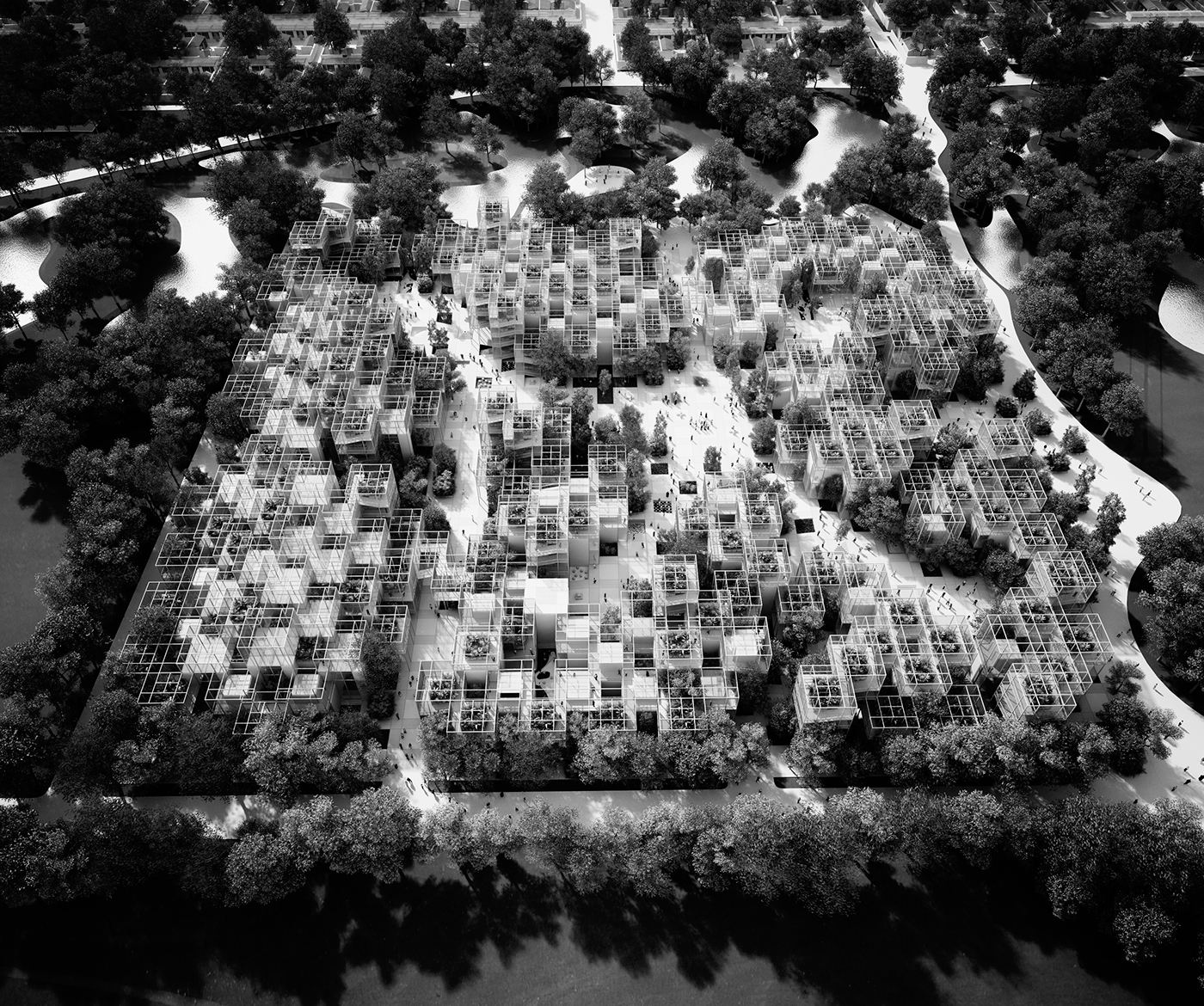
Proud to kick off this year with a competition-win of an invited competition to design a pavilion for Chinese leading-developer Vanke for the 2019 Horticultural Expo in Beijing.
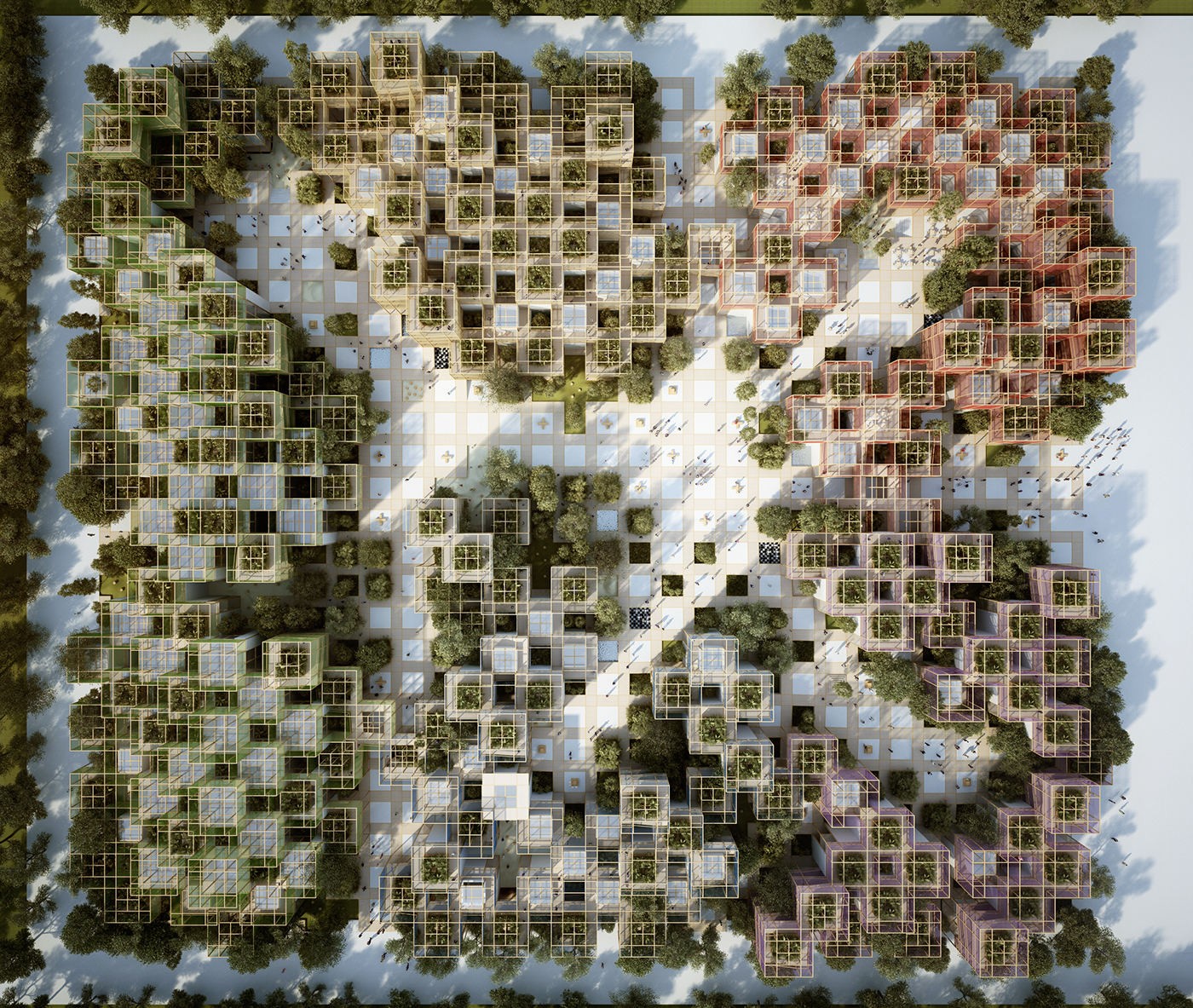
Vanke Pavilion for Beijing’s 2019 International Horticultural Expo
The design is a assembly of modular building-blocks, that contain five main functions of the pavilion. Each block connects at the corners to its neighbors and offers a continuous space inside and one linked “urban gardening” area on the roof.
The site of the horticultural expo is between the density of Beijing and the undulating river valleys in the North of the city. The area is rapidly growing in popularity as a recreational area for Beijing citizens. In this surrounding, the Horticultural Expo sets up to promote a healthy and ecological co-existence with our natural environment.
The “Thousand Yards” pavilion is located on the western area of the Horticultural Expo site
After entering the pavilion on the eastern border of the site, a path is guiding the visitors to a plaza in the center. This central plaza is a major pivotal point and meeting spot for visitors. From the plaza, people are taken further to the main functions of the pavilion. A food-court with a restaurant, a bar and several tea-houses and a Multipurpose hall on the northern border, a large indoor greenhouse for untypical plants on the western side and a center of education and exhibition on the southern edge. All functions feature a connected space on their lower 2 floors and outside gardening units on the roof.
The design is a assembly of modular building-blocks, that contain five main functions of the pavilion. Each block connects at the corners to its neighbors and offers a continuous space inside and one linked “urban gardening” area on the roof.
The site of the horticultural expo is between the density of Beijing and the undulating river valleys in the North of the city. The area is rapidly growing in popularity as a recreational area for Beijing citizens. In this surrounding, the Horticultural Expo sets up to promote a healthy and ecological co-existence with our natural environment.
The “Thousand Yards” pavilion is located on the western area of the Horticultural Expo site
After entering the pavilion on the eastern border of the site, a path is guiding the visitors to a plaza in the center. This central plaza is a major pivotal point and meeting spot for visitors. From the plaza, people are taken further to the main functions of the pavilion. A food-court with a restaurant, a bar and several tea-houses and a Multipurpose hall on the northern border, a large indoor greenhouse for untypical plants on the western side and a center of education and exhibition on the southern edge. All functions feature a connected space on their lower 2 floors and outside gardening units on the roof.

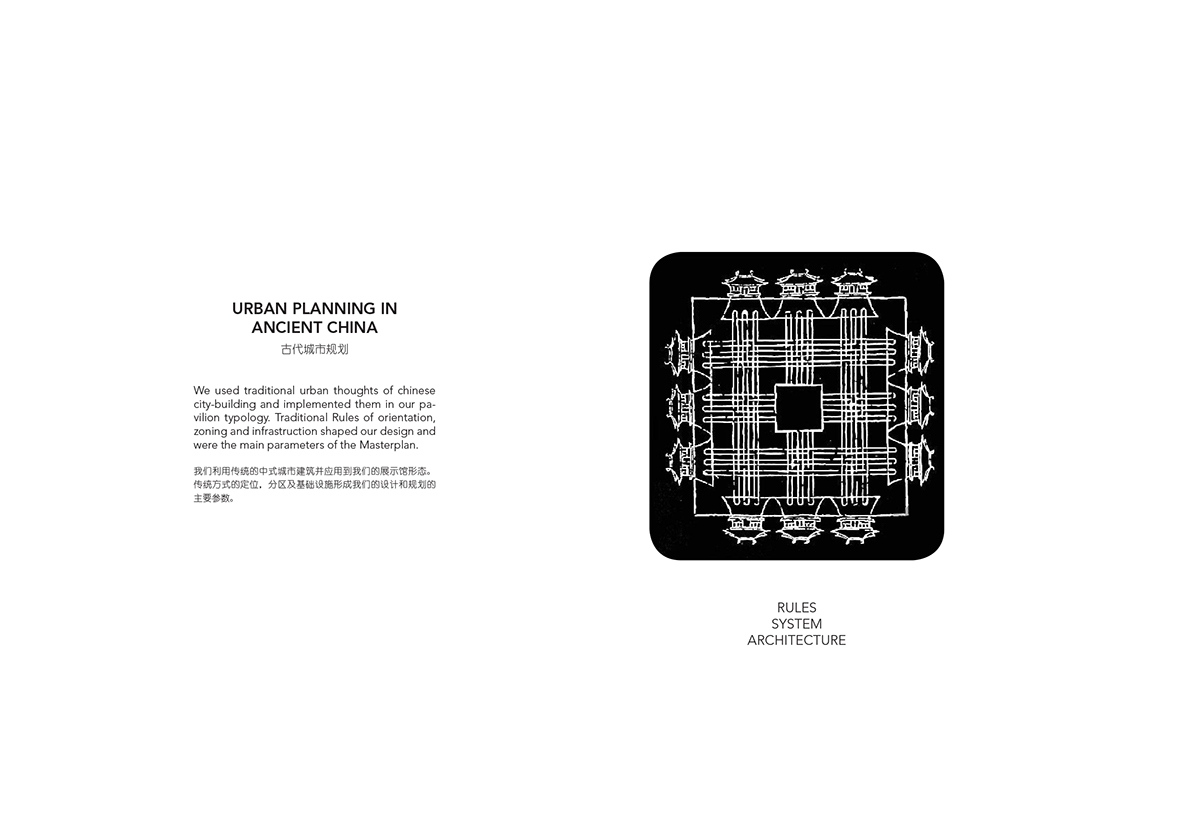
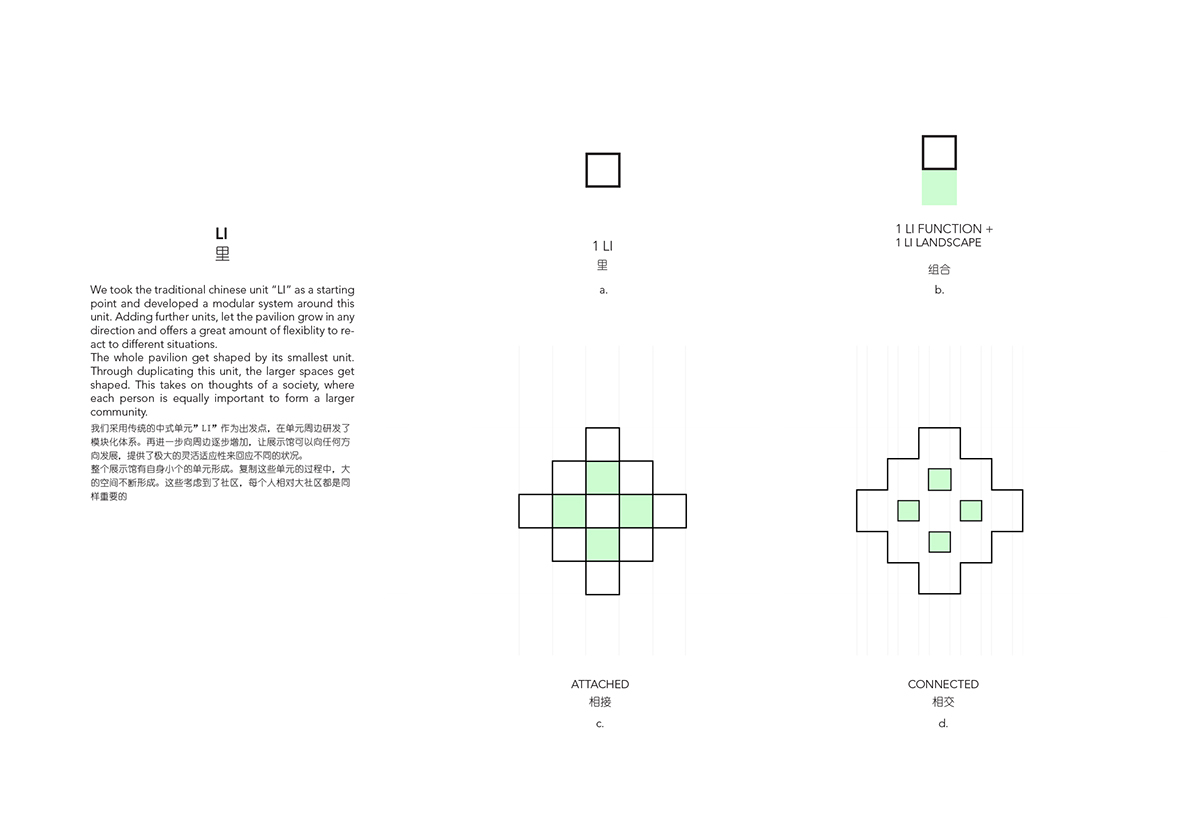
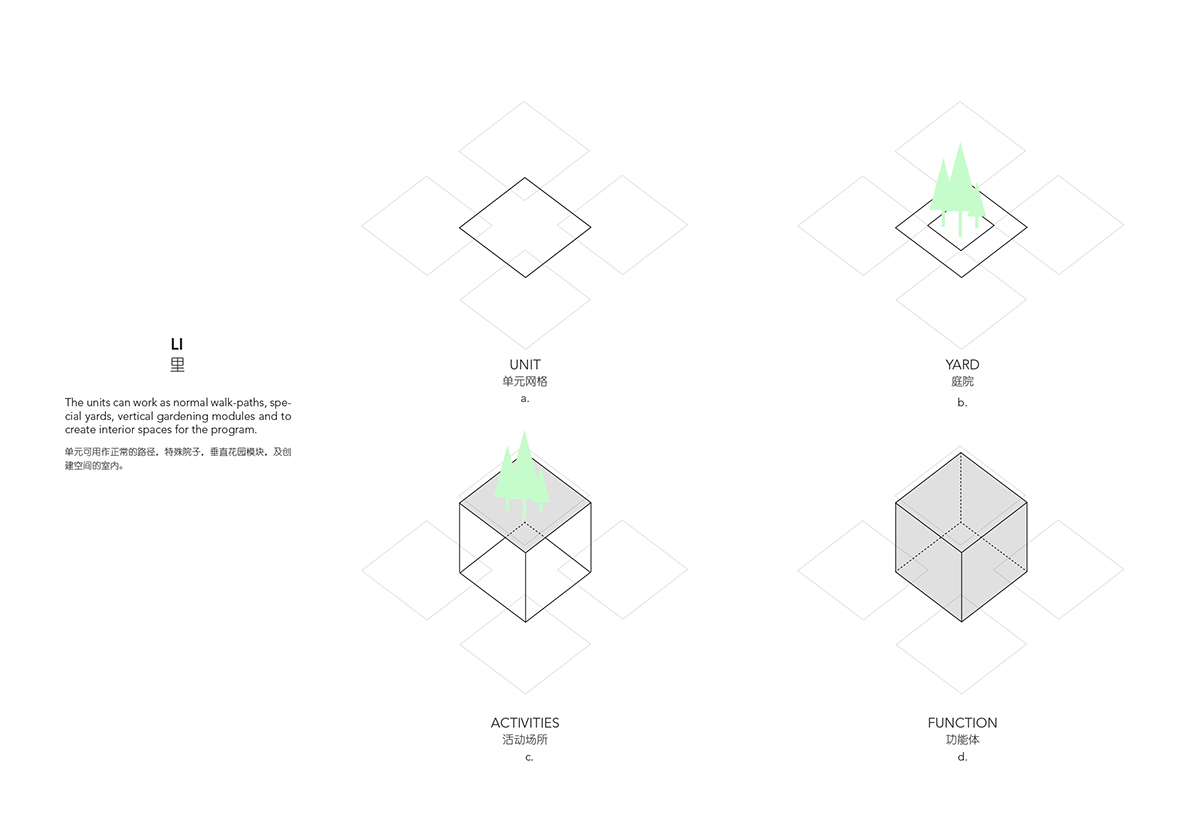
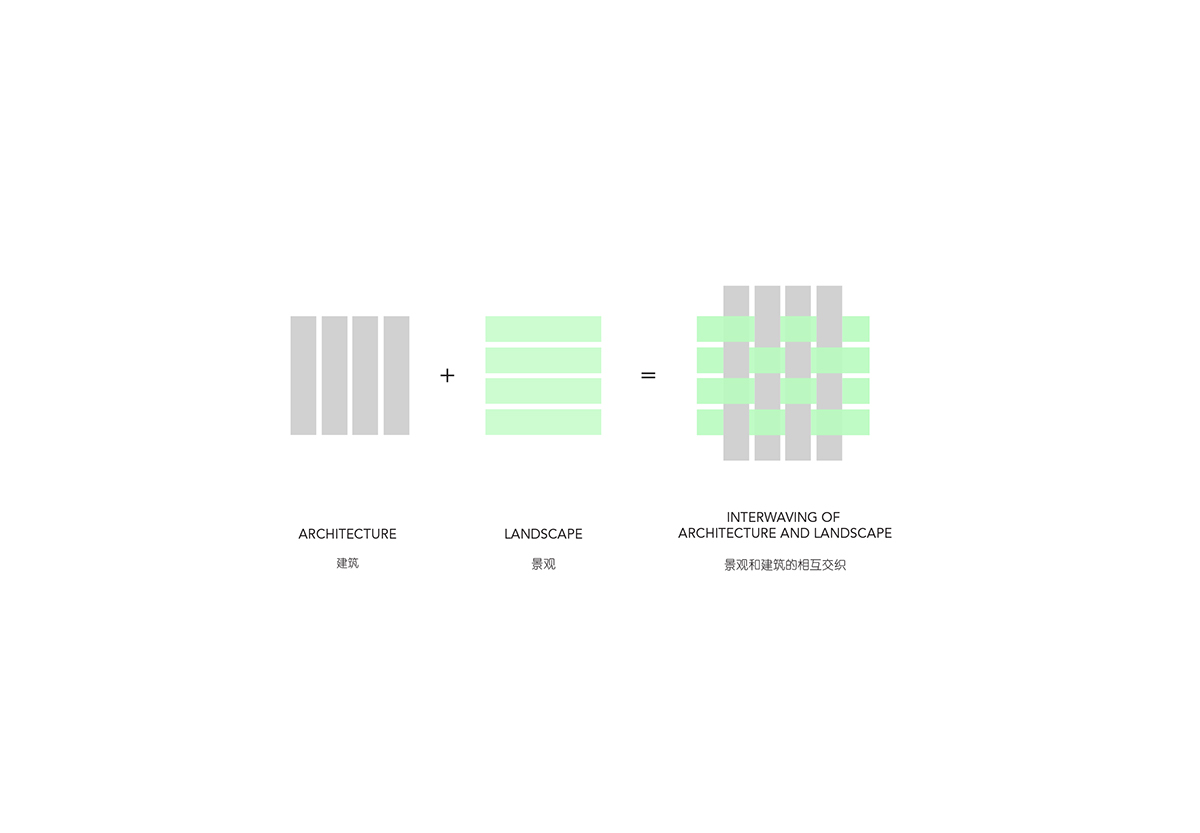
Curiosity / Village Typology:
The pavilion was designed as a network of small scale units. It was a core feature to avoid a large, iconic structure that covers a majority of the land. Rather, we wanted to create a village-like typology that can be explored by the visitors. The small scale typology creates a space with the notion that something special is able to happen at each corner. A village creates diversity, it creates unexpected connections, and the curiosity to discover the unforeseen.
“In most Expo Pavilions, the paths are guided and that makes their exhibitions boring. We believe that architecture and its spaces need to be explored by the visitors. The hunt to make a unique discovery. Like, when you find a little cafe hidden in an alley of a city. That surprising connections create a special and personal bond to a place and we believe that architecture needs to make space for those possibilities,” says Precht.
Flexibility / Modular System:
The masterplan of the pavilion was inspired by the rules of urban planning in ancient Chinese cities. We used traditional urban thoughts of orientation, zoning and infrastructure and implemented them in the typology for the pavilion. We took the ancient Chinese “Li” (an old area-measurement) as a base unit and developed a modular system around it. By adding further units, the aggregation can grow in each direction to meet all needs and demands of each function. This modular system offers also a flexibility to move forward. During the next 3 years, different subcontractors and partners will add variables to the project, which the design needs to incorporate. Larger exhibitions spaces, Less teahouses, or more tables for the restaurant.
“A design that is built on a performative layout is easier adapt to changes than a layout that is designed on form itself,” says Sun.
Material / Standardisation:
Cross Laminated Timber (CLT) panels will be the major structural material for the pavilion. Covered with a cladding, the material will apply to the strict fire-code. Large Glass panels on each corner creates a connection between the modules and between the inside and outside. A structural timber frame will carry the roof-structure with the gardens and natural walk paths. A solid striation as a bottom and a a wooden, linear structure on top connects the typology to the traditional composition of a Chinese house.
“All parts of the pavilion will be standardised and can be prefabricated in a factory before being delivered to site. That makes the construction process extremely efficient and cost-effective. It also makes the construction on site flexible to alter the program or add certain areas on short notice,” adds Sun.
GREENHOUSE
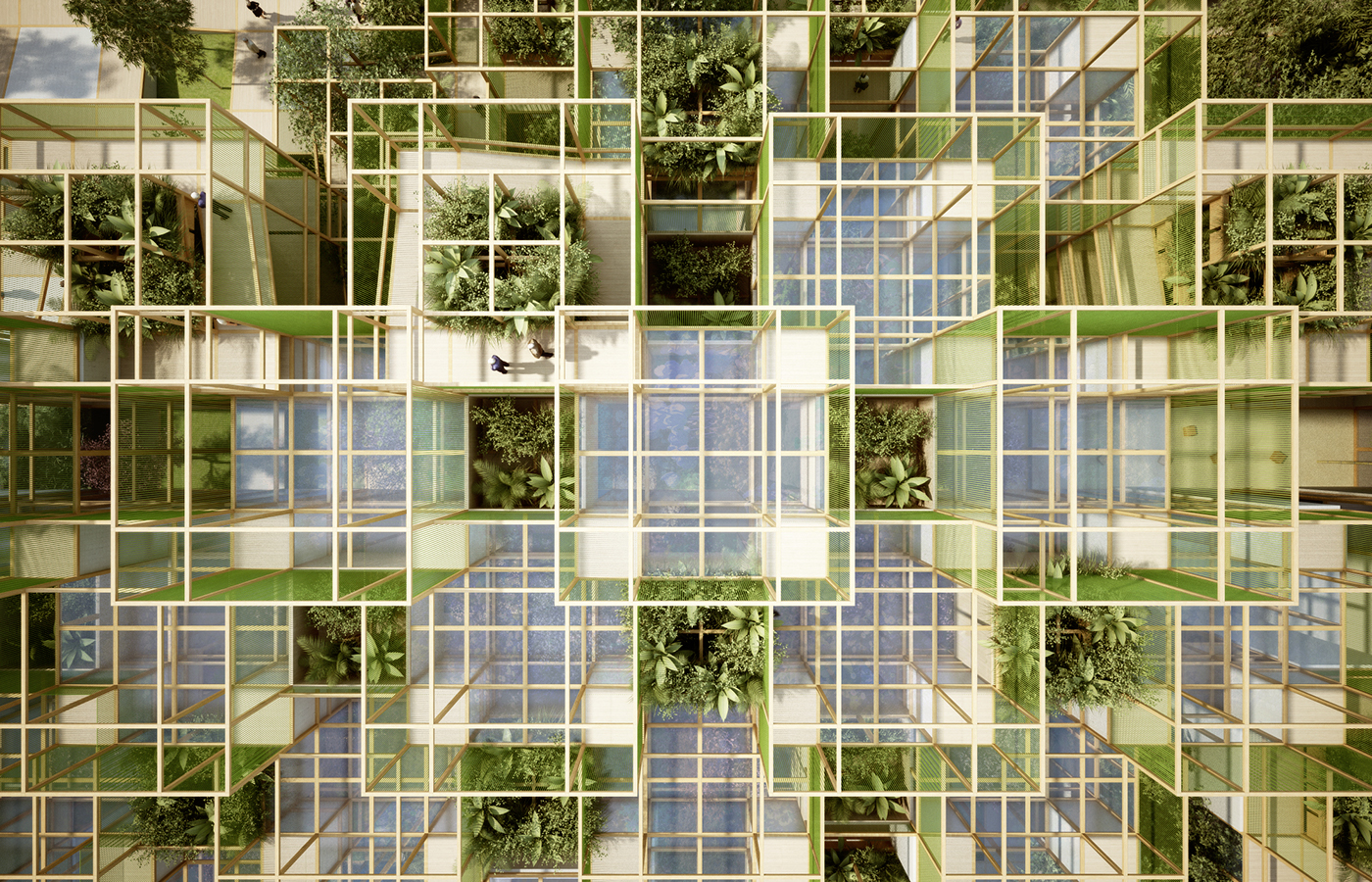
LAB & EDUCATION
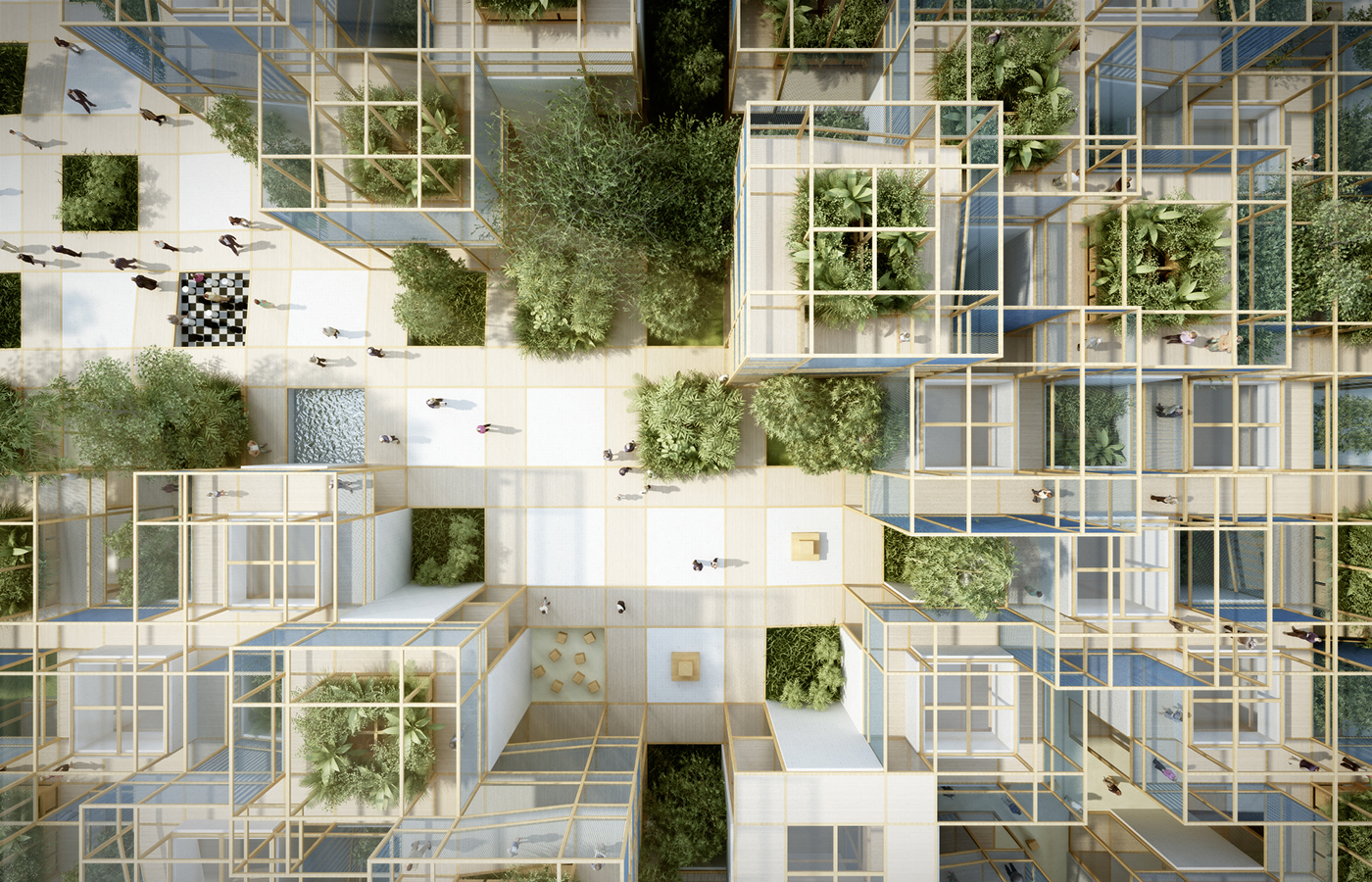
MULTIPURPOSE HALL
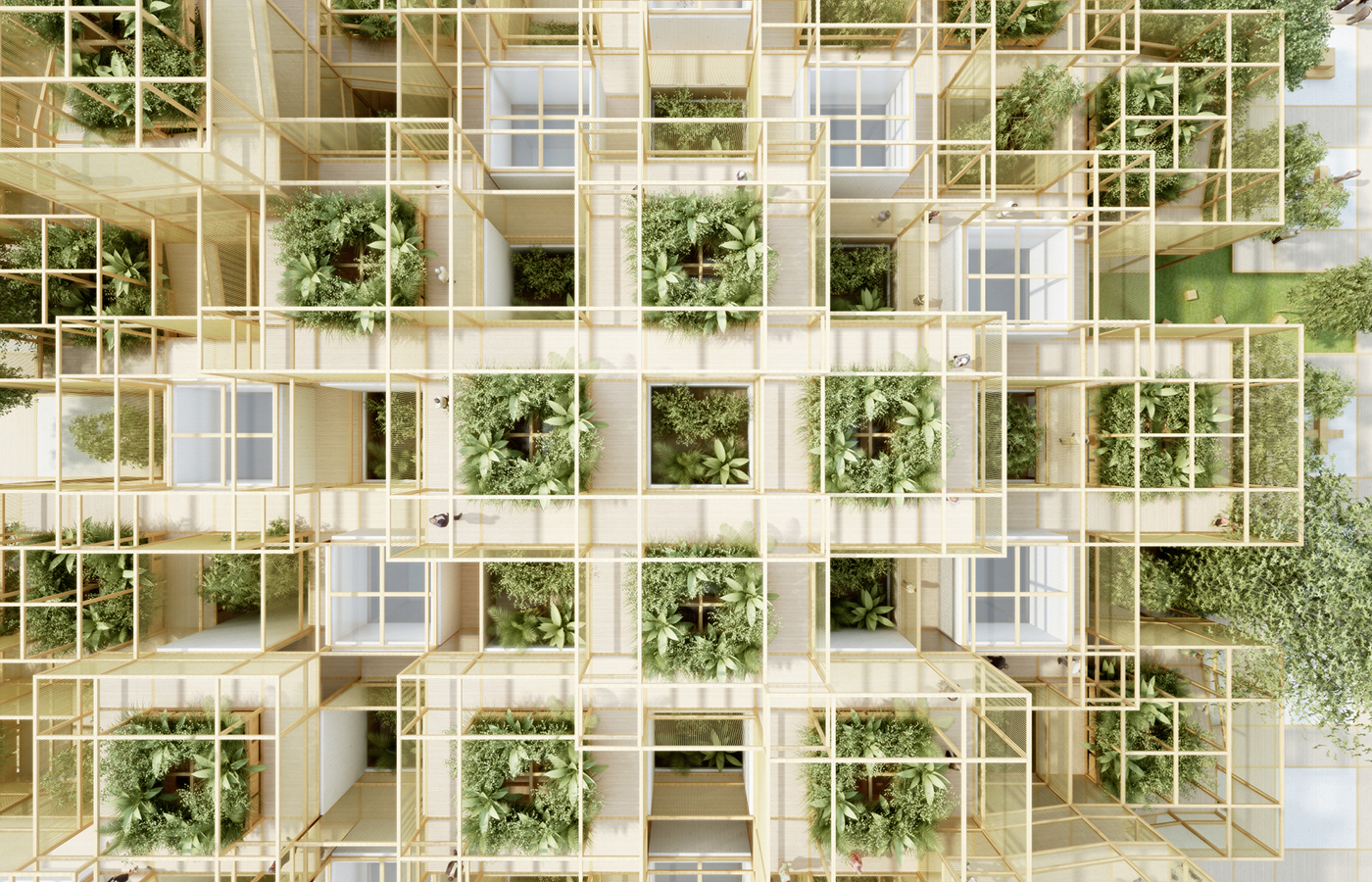
FOOD COURT
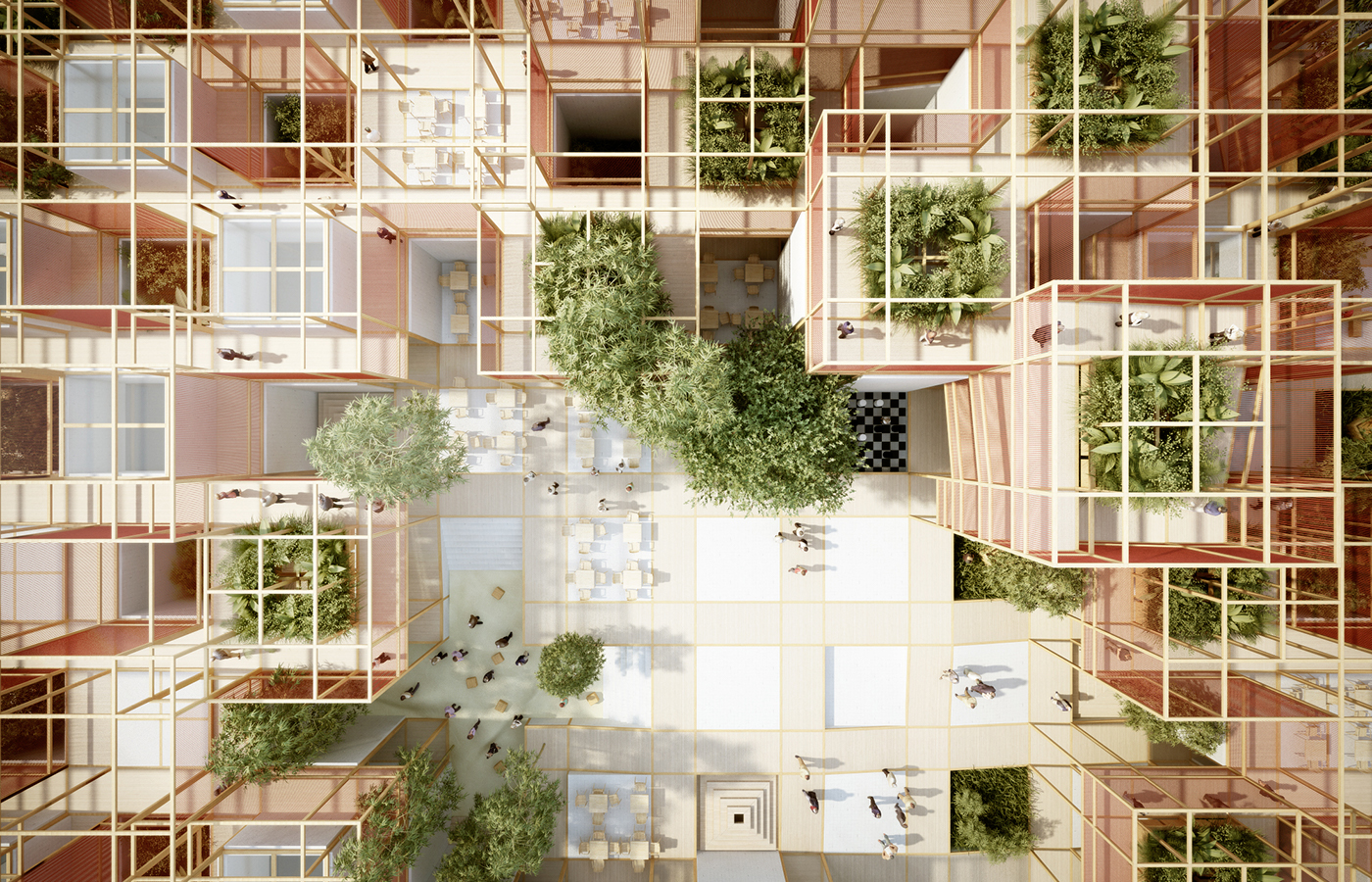
URBAN GARDENING
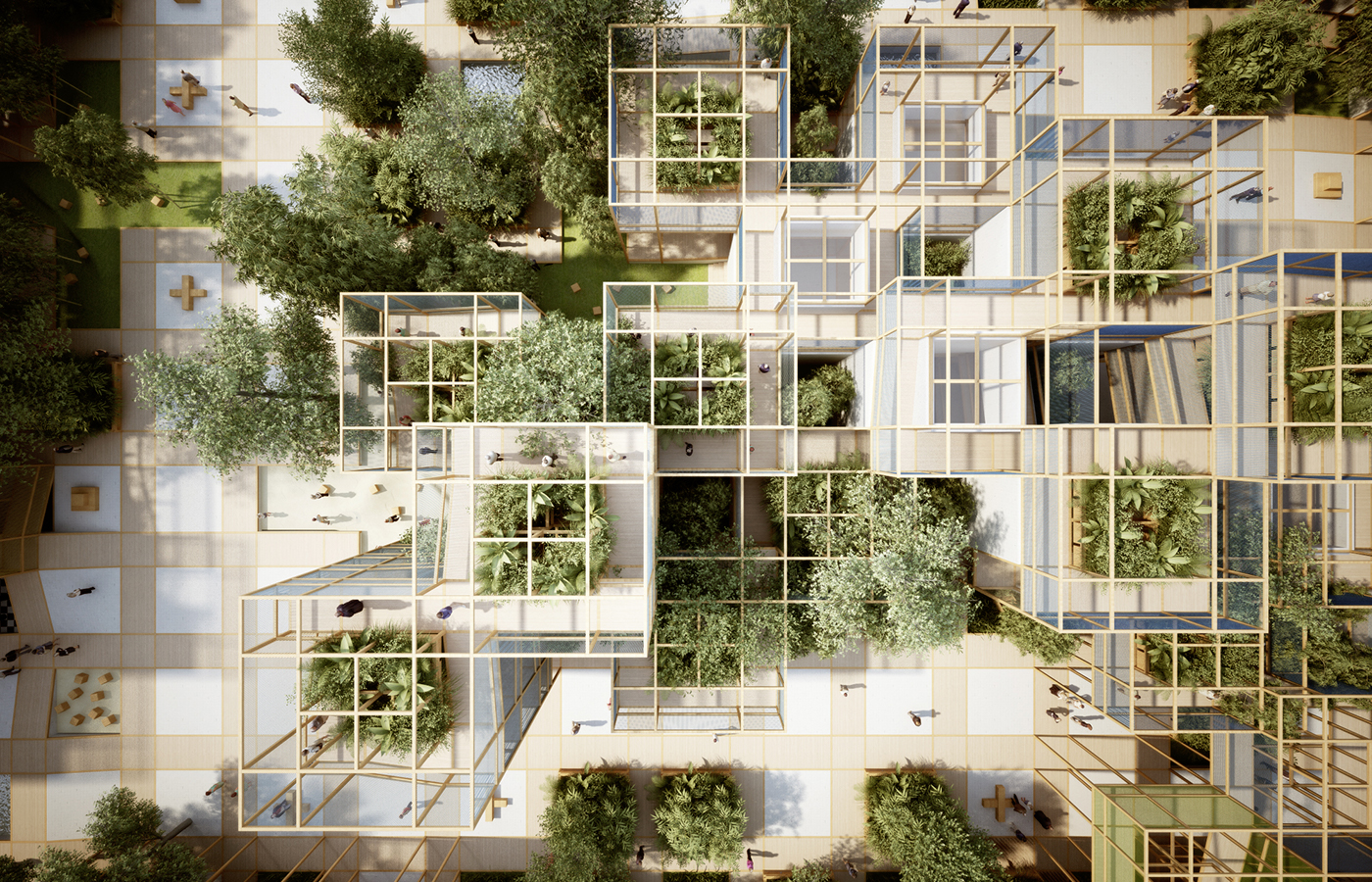
EXHIBITION
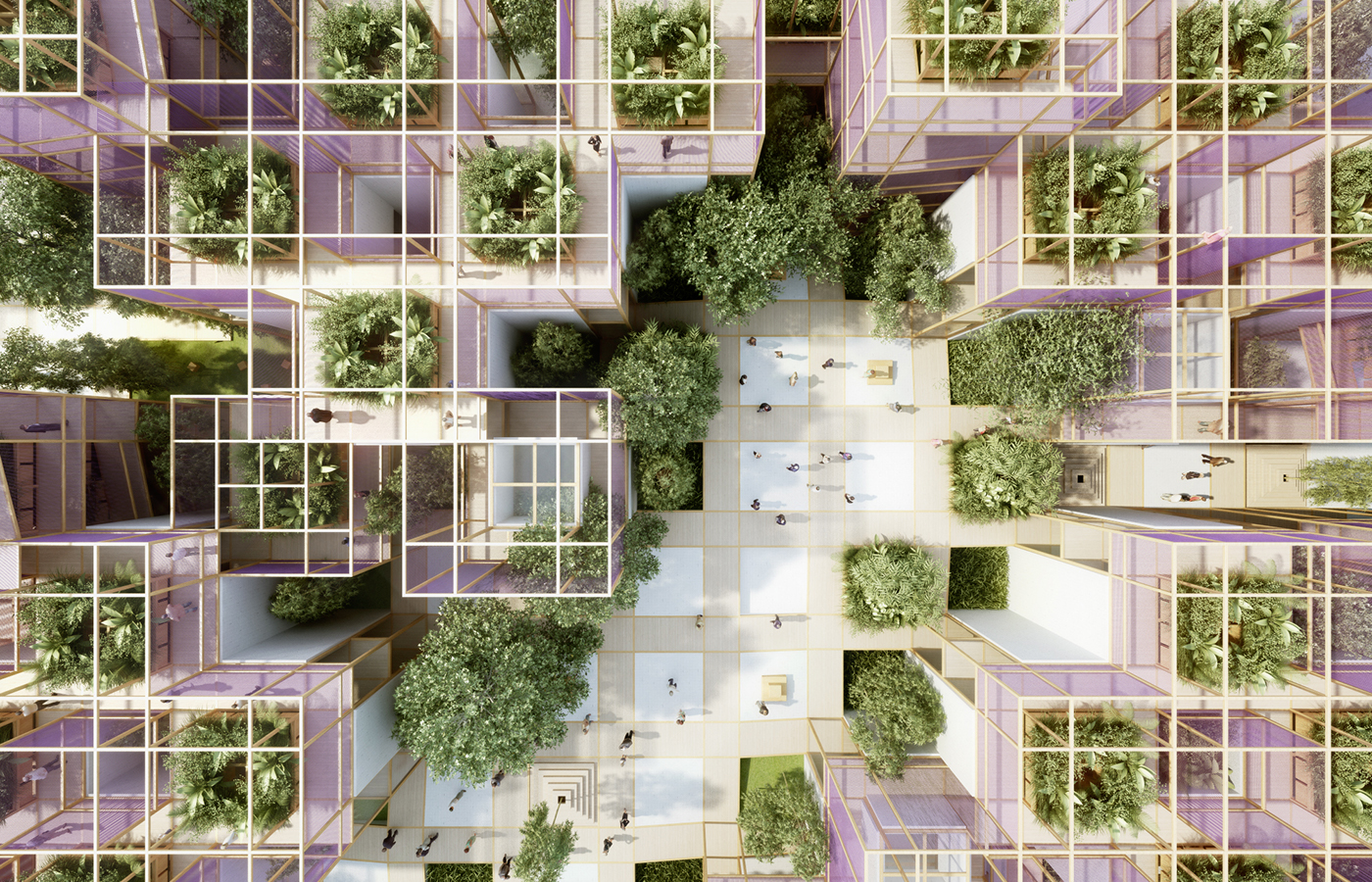
Interweaving of Architecture and Nature
Like a checker-board, the building blocks and yards alternating with one another to create a symbioses between architecture and the yards. All yards are filled with various functions, from ping-pong tables or children playgrounds for the active guests to themed gardens with benches for the tired visitors.
In a usual Expo Pavilion, visitors need to line up for hours in order to visit the exhibition inside a pavilion. The “thousand yards” pavilion is designed to make the entire outside of the pavilion a area for the public and visitors can spend their time planting seeds or playing in one of the yards, while waiting to get into the exhibition areas.
Visitors Participation / Design with Nature:
Visitors get a package of seeds at the entrance and are asked to plant vegetables, fruits or herbs in the gaps between the timber structure on the roof. Ramps connect the green roof to the public areas of plazas and yards, inviting all visitors to leave their own “ecological impact” on the pavilion. All plants from the roof get harvested by the pavilions staff and prepared into healthy dishes in the restaurant area.
By seeding plants on the structure, Visitors not only bring life to the pavilion, but are also a main designer of the building. While people are strolling through the structure, they are constantly surrounded by nature and “home-grown” food and they get a better understanding of the life-cycle of plants what it takes to harvest healthy incidences for our daily dishes.In times of severe food, air and water poisoning, this marks an important topic for fast developing countries and should promote a path that nature, architecture and people live in an ecological co-existing.
“By 2050 more than 10 billion people will inhabit our planet and more than 70% will live in urban areas. Looking forward, we need to find alternatives to feed a growing urban population, as the current way of agriculture, food-production and food-supply is highly unsustainable. In future, cities must take more responsibility for producing the extra nutrition. Growing locally on facades and roofs creates vital, connected communities and reduces carbon emissions and heat in the process,” say the architects.
Reusability / Transformation for the After-Use:
There is a leading effort by the government to transform the area of the International Horticultural Expo into a popular residential area due to its connection to the city, but also because of its immediate proximity to a natural surrounding of mountains and seas. The event should help to populate the surrounding and expand the city of Beijing into the area.
In the aftermath of the Horticultural Expo, the pavilion will transform into an ecological education area with schools, dormitory, a canteen, playgrounds, lecture halls and a large library. The sizes of the modules are already designed to turn them easily from exhibition spaces into classrooms or student bedrooms.
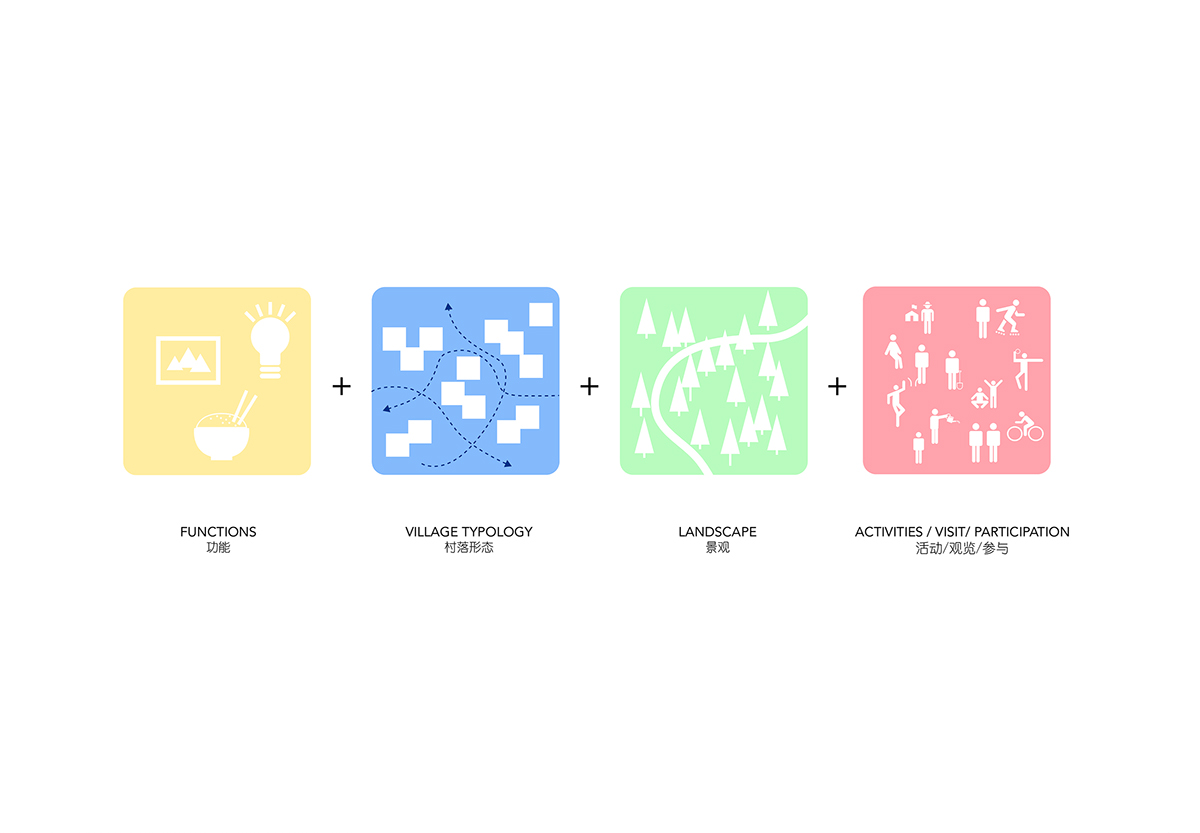
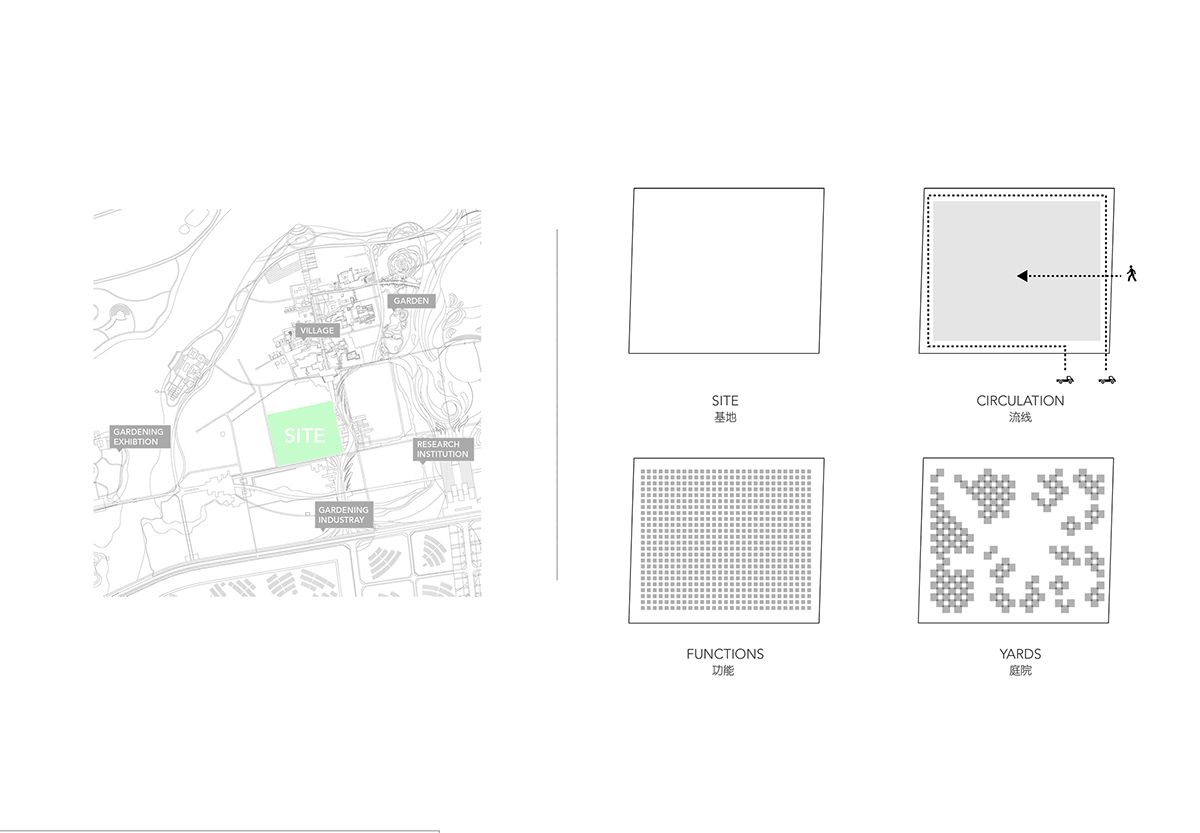
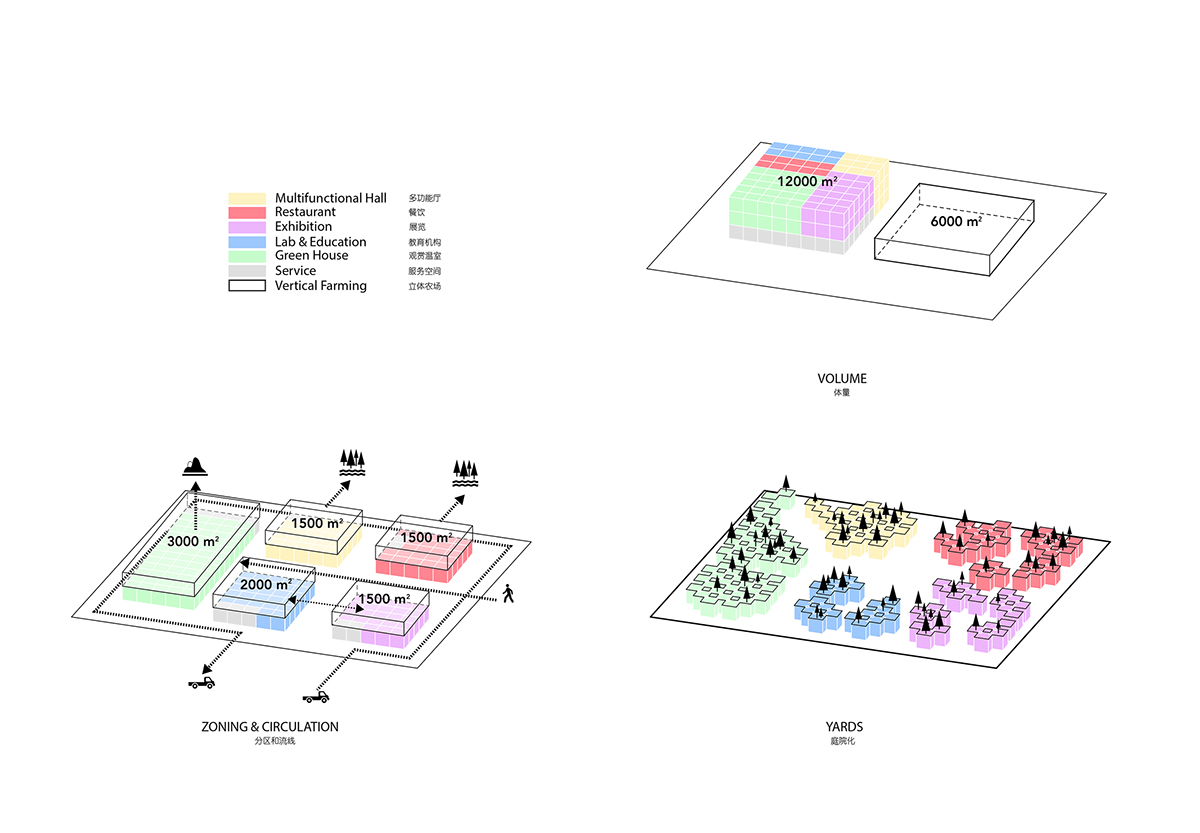
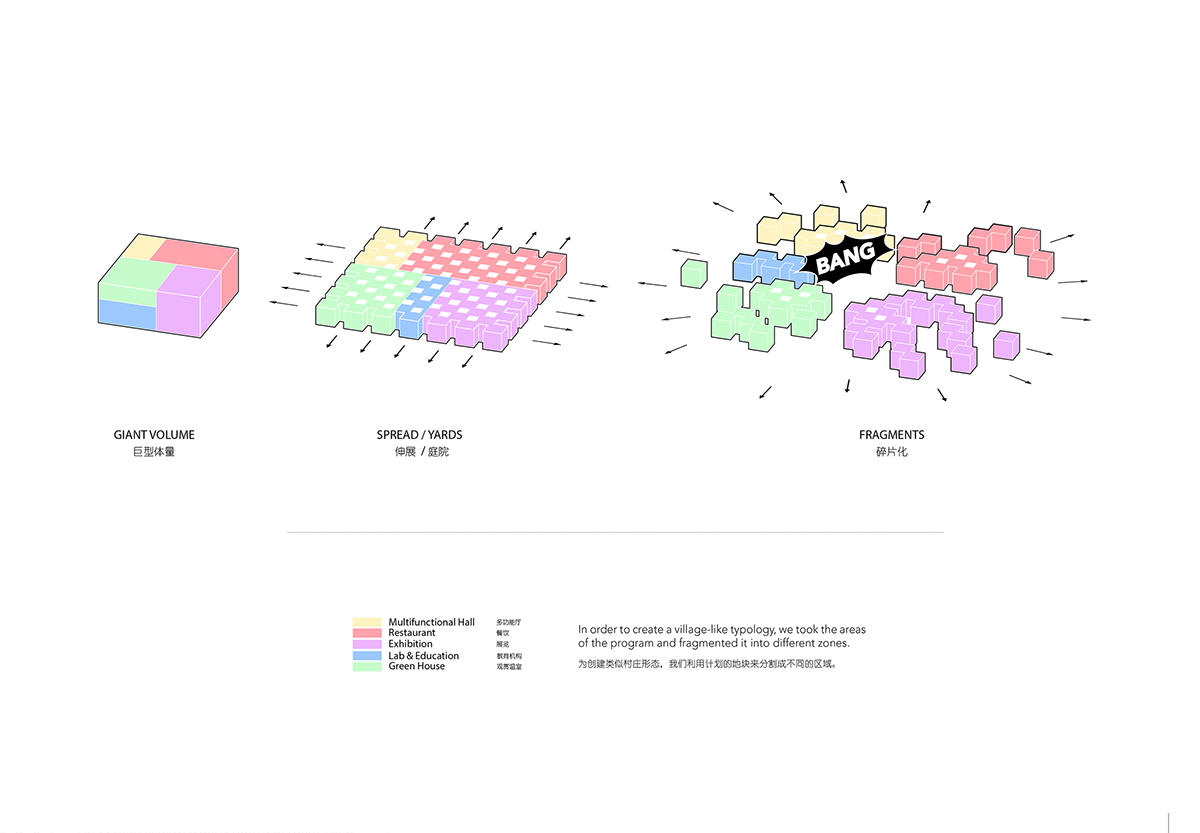
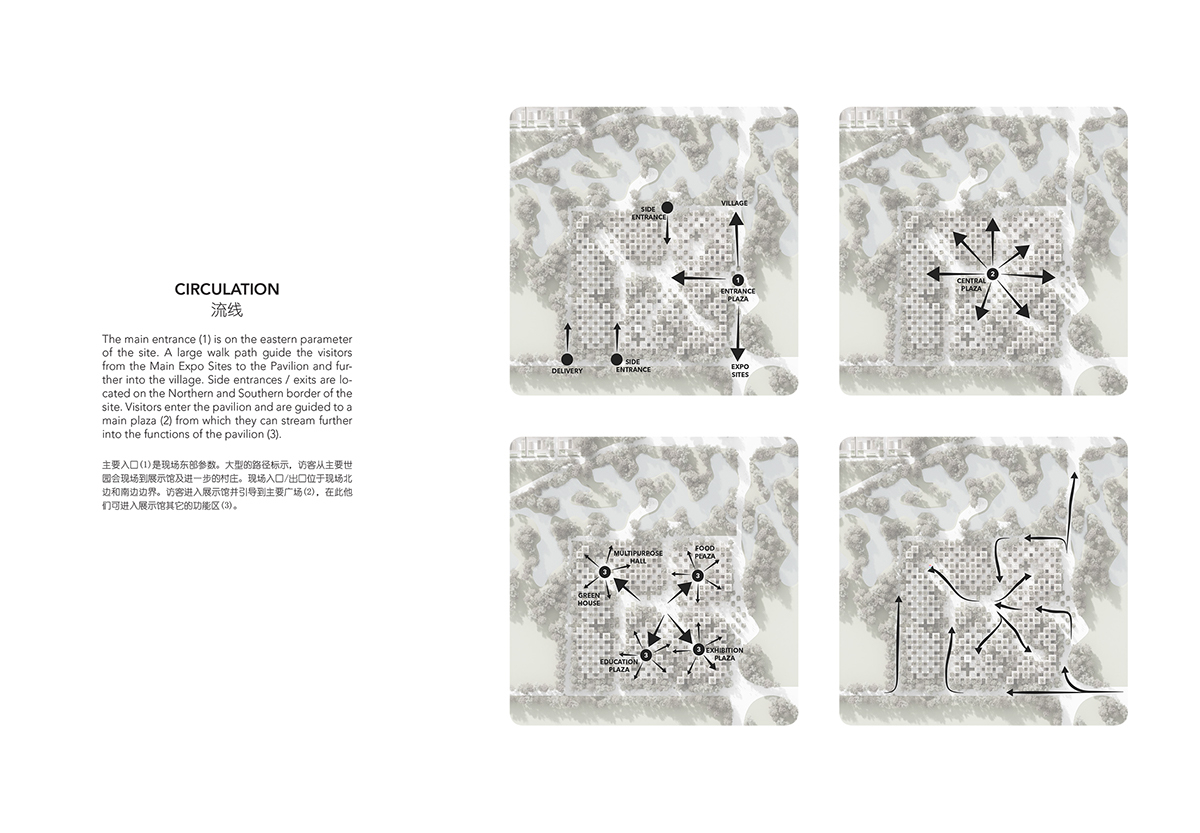
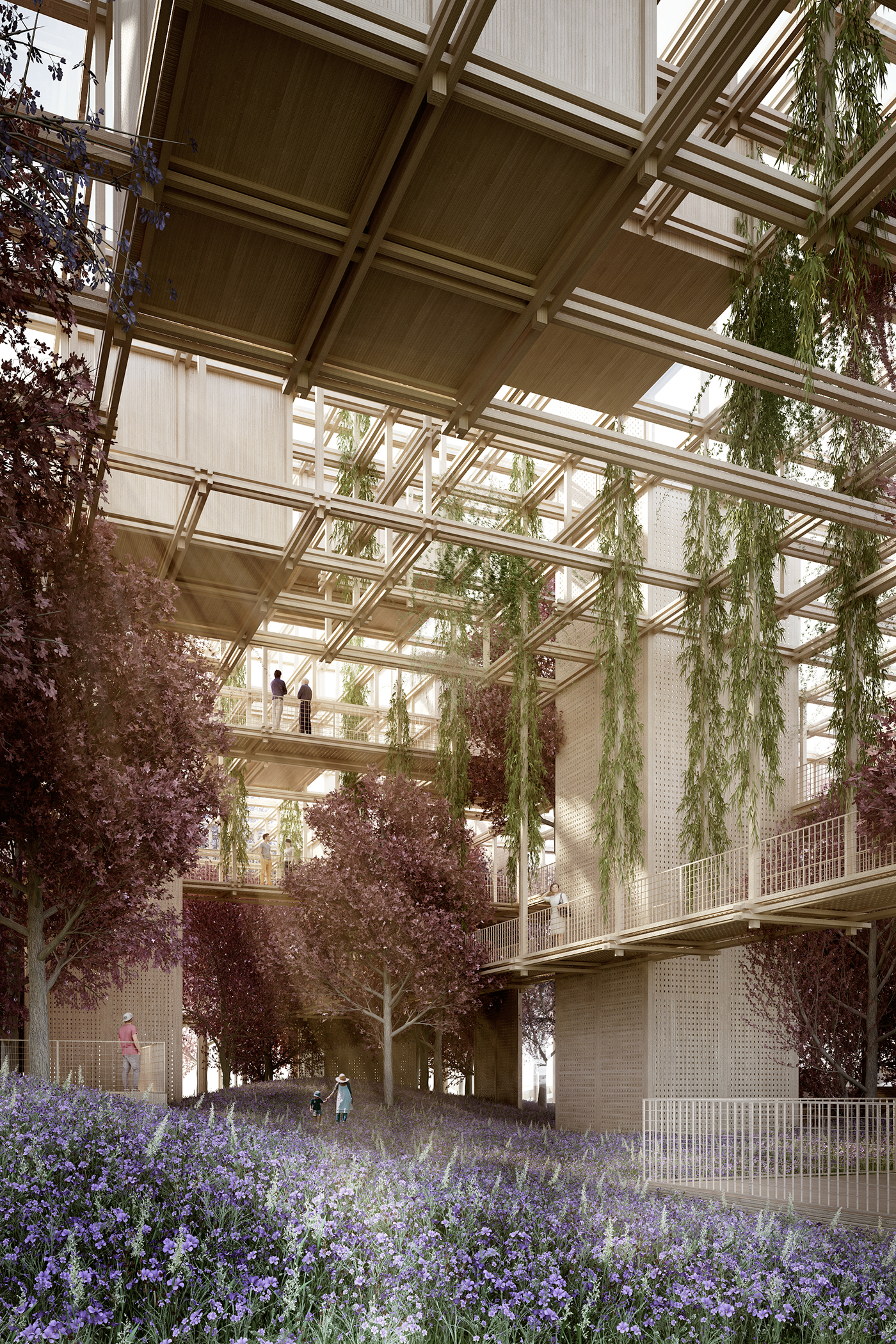
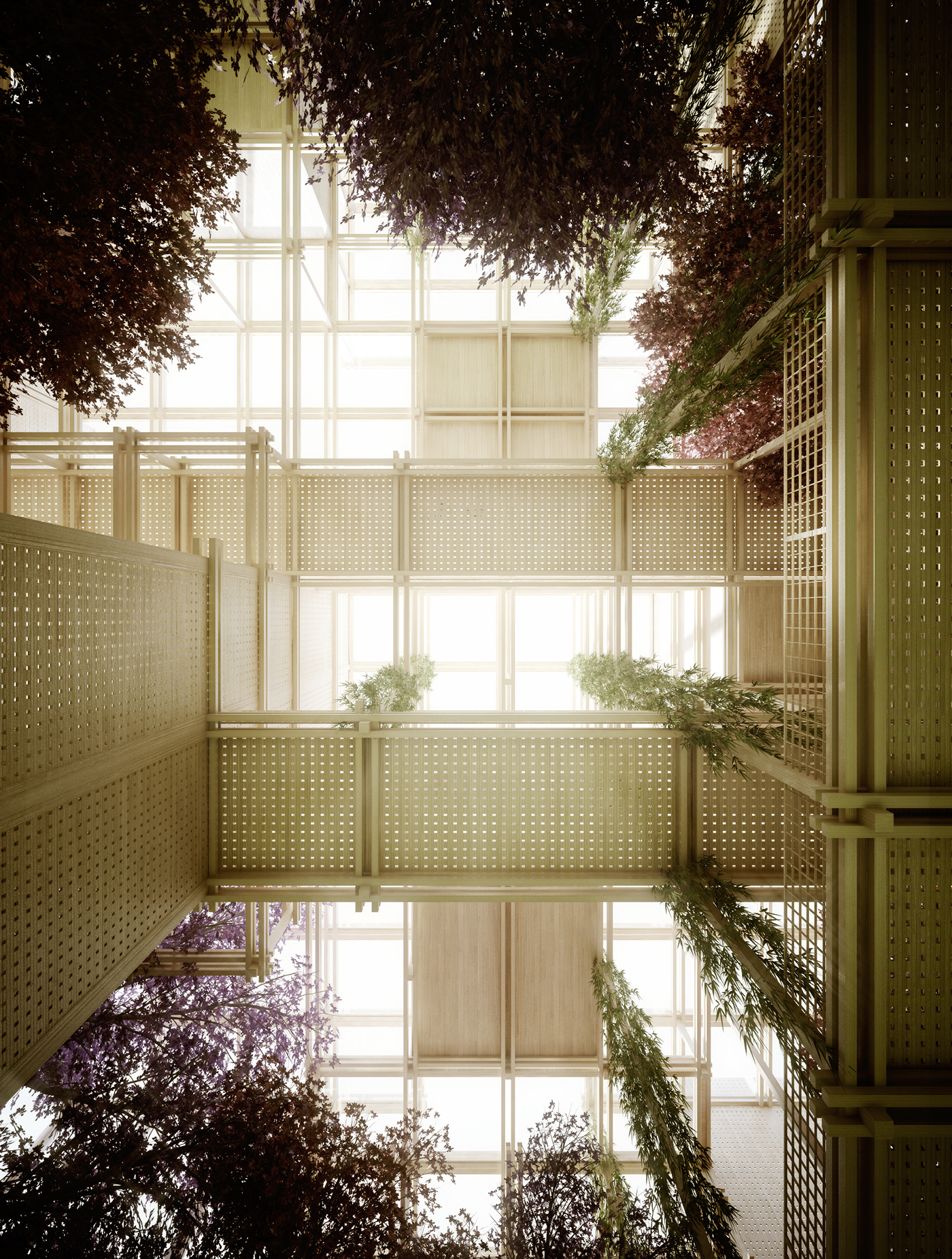
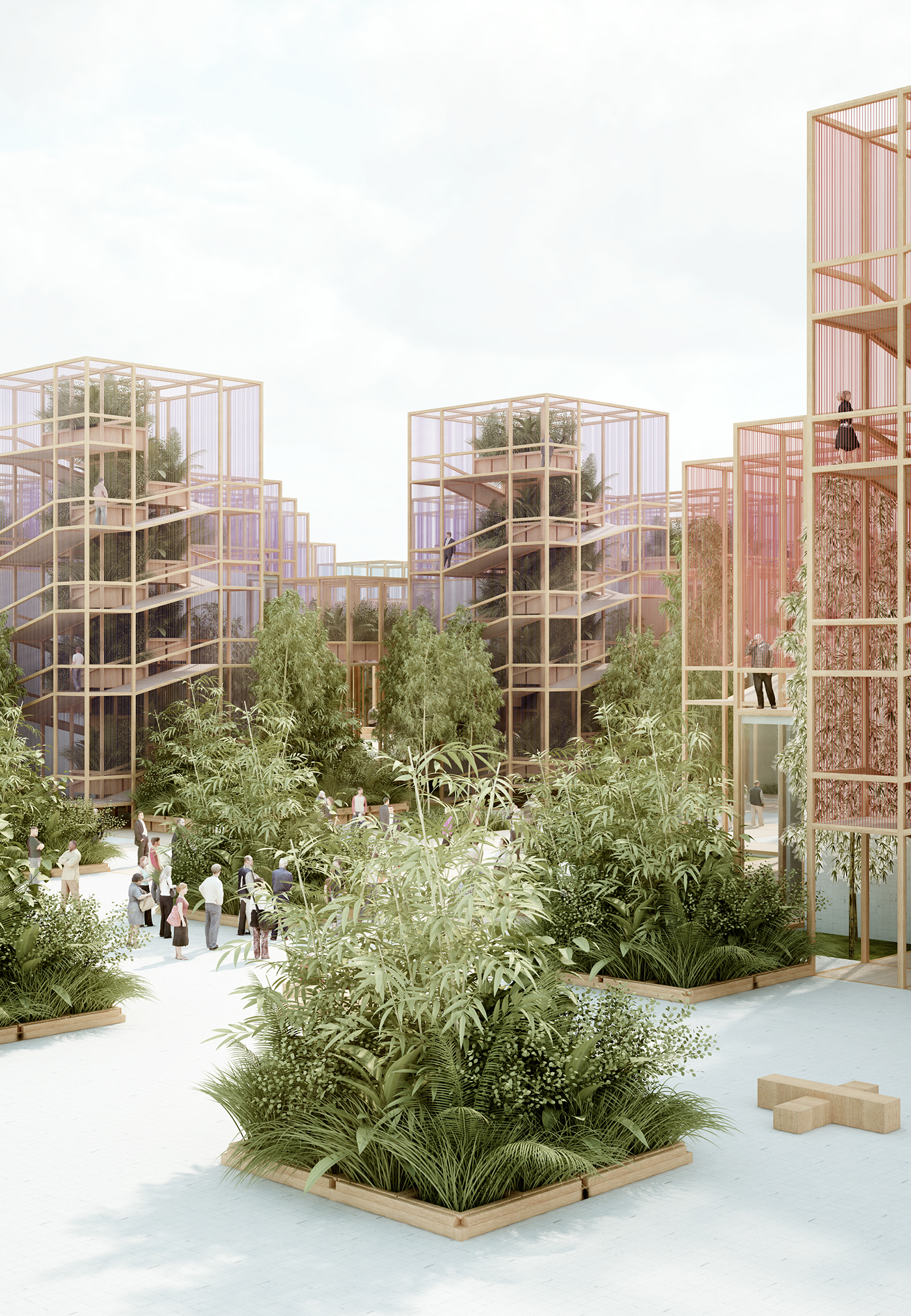
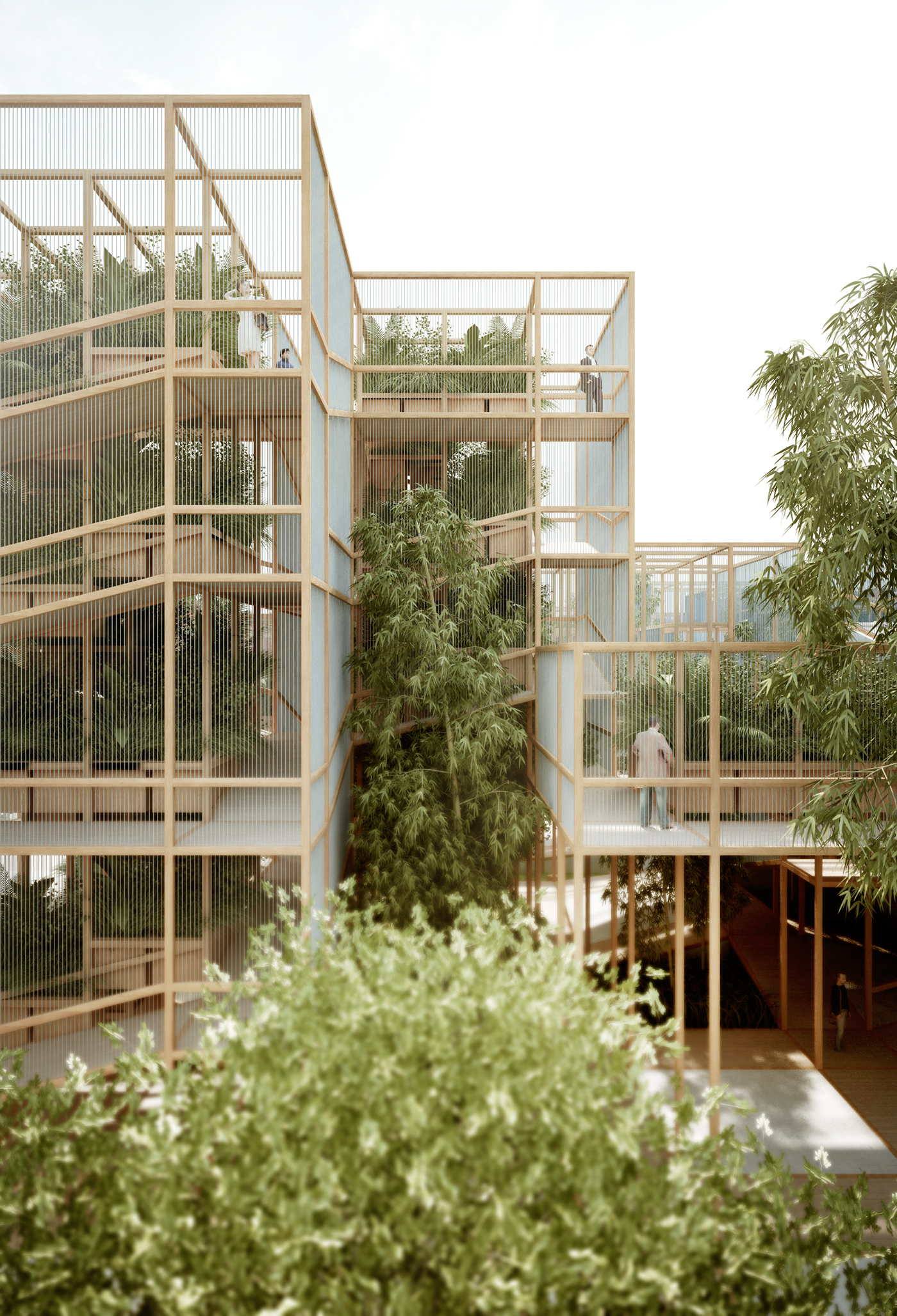
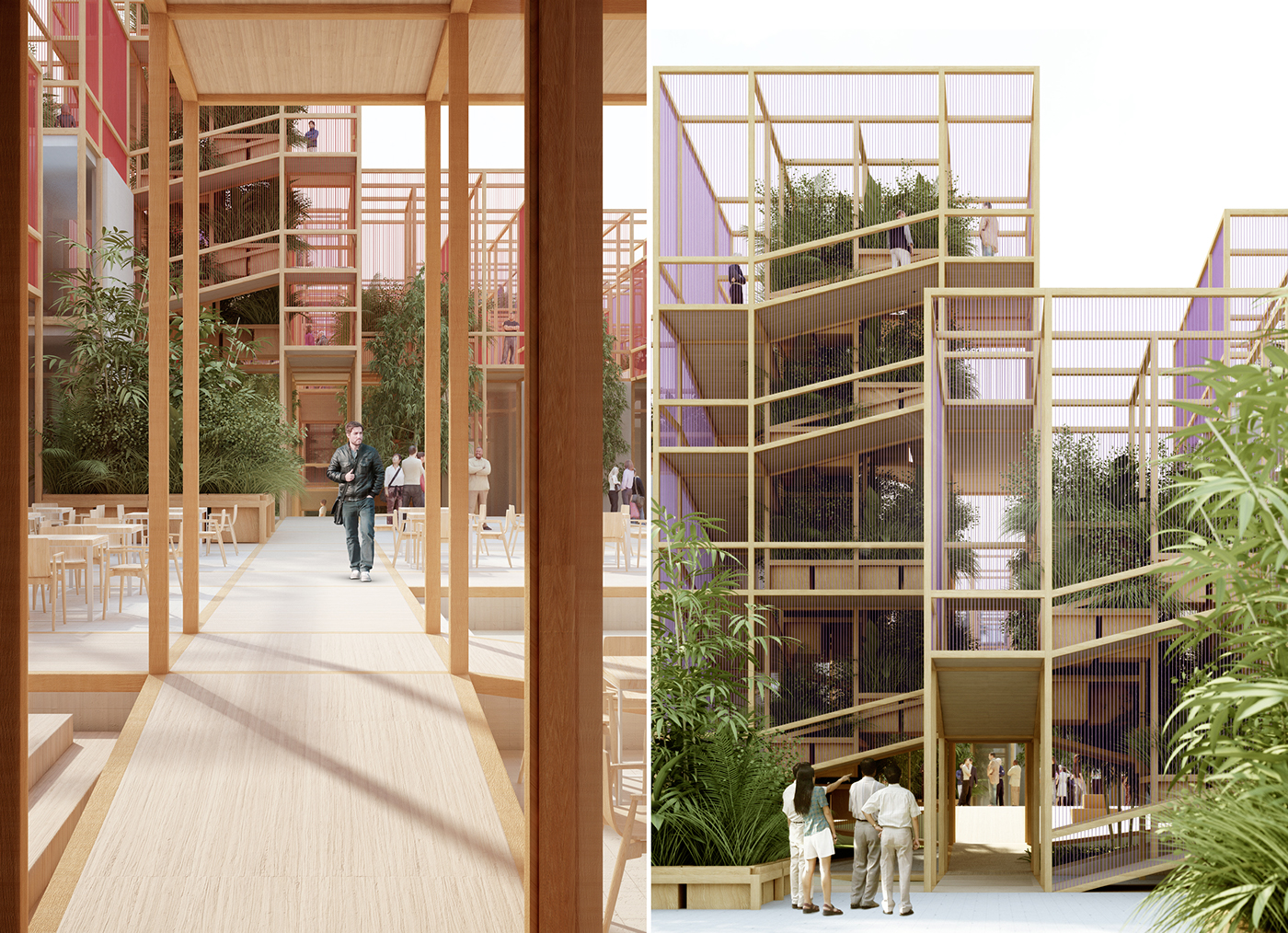
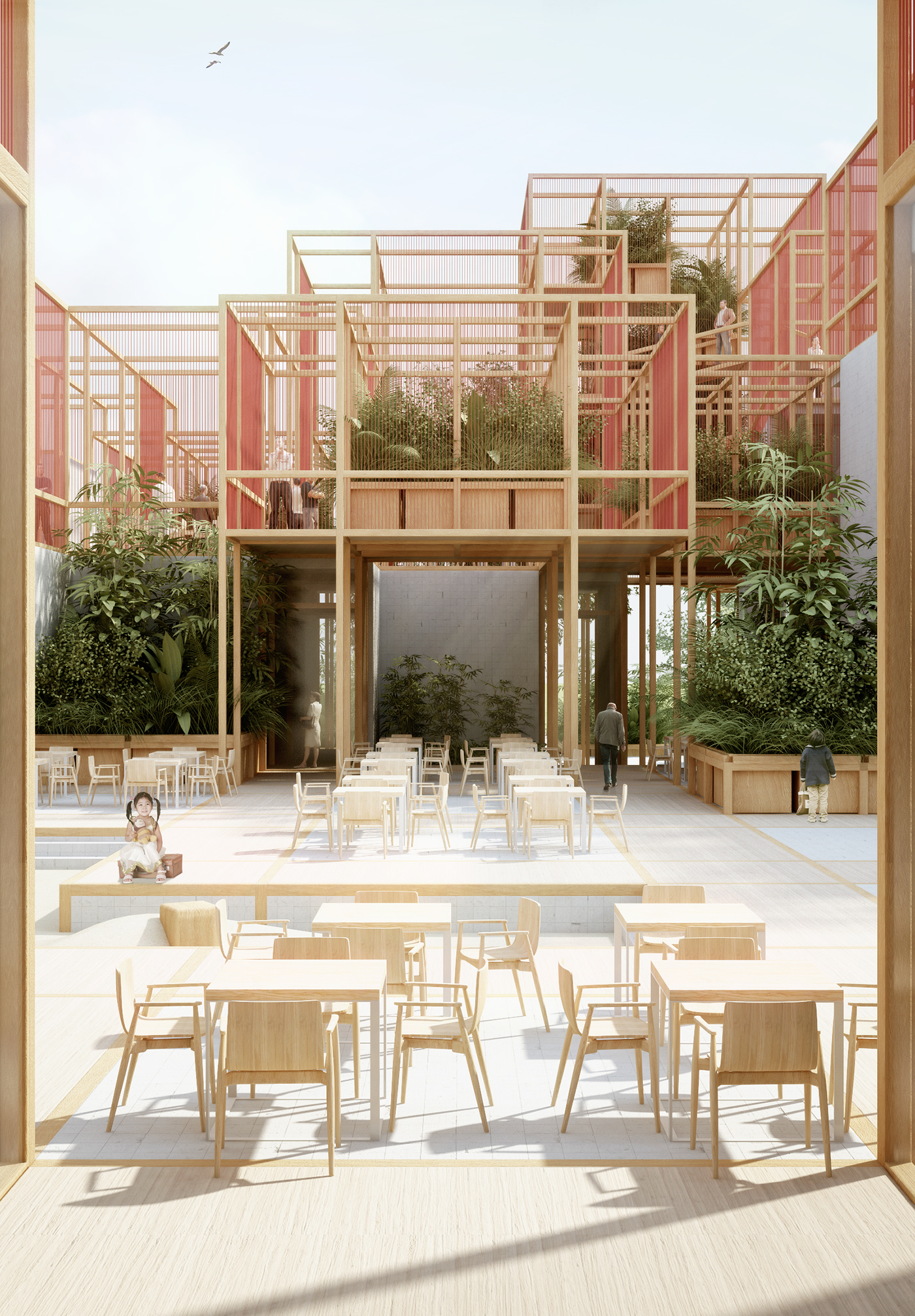
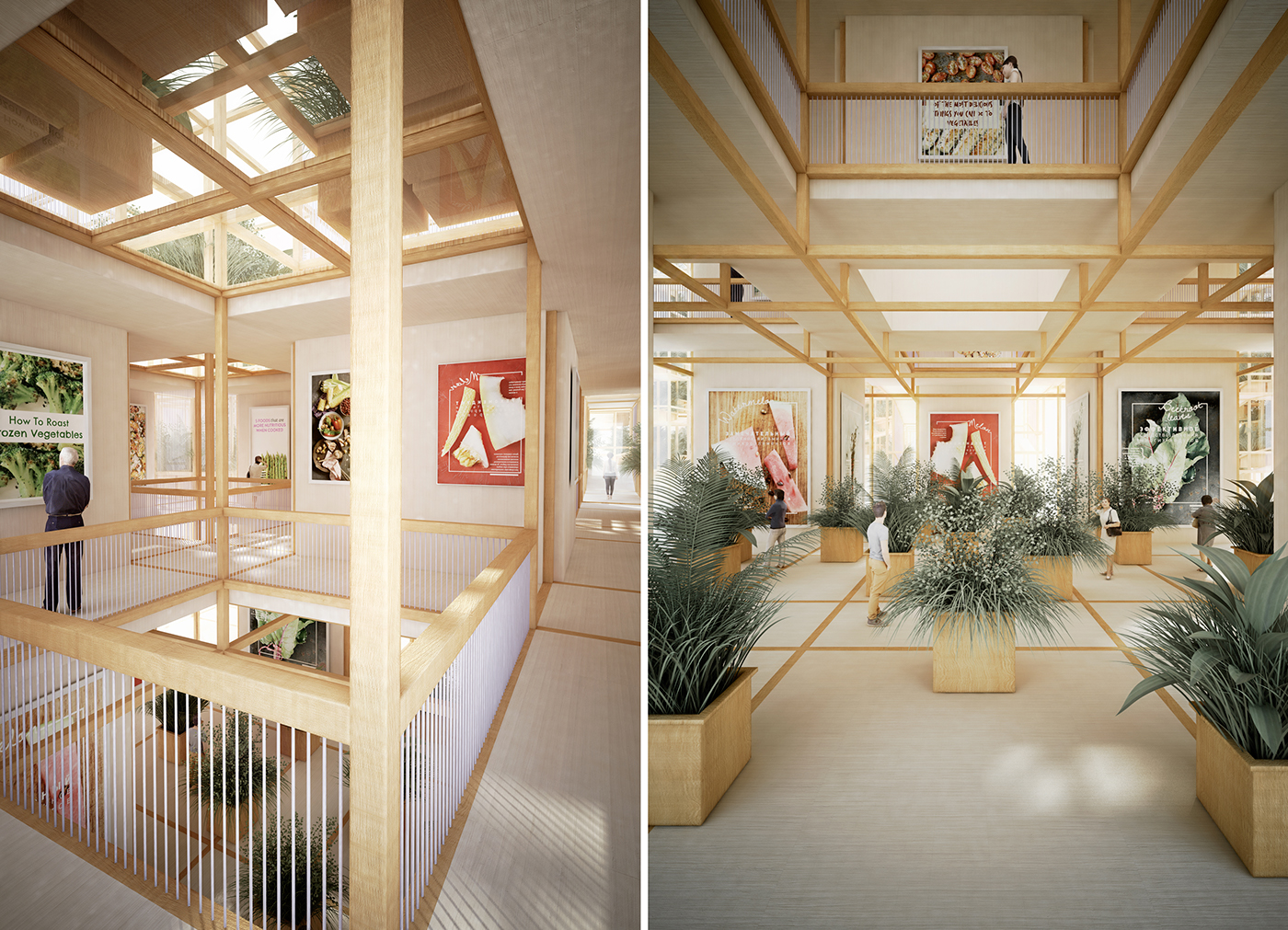
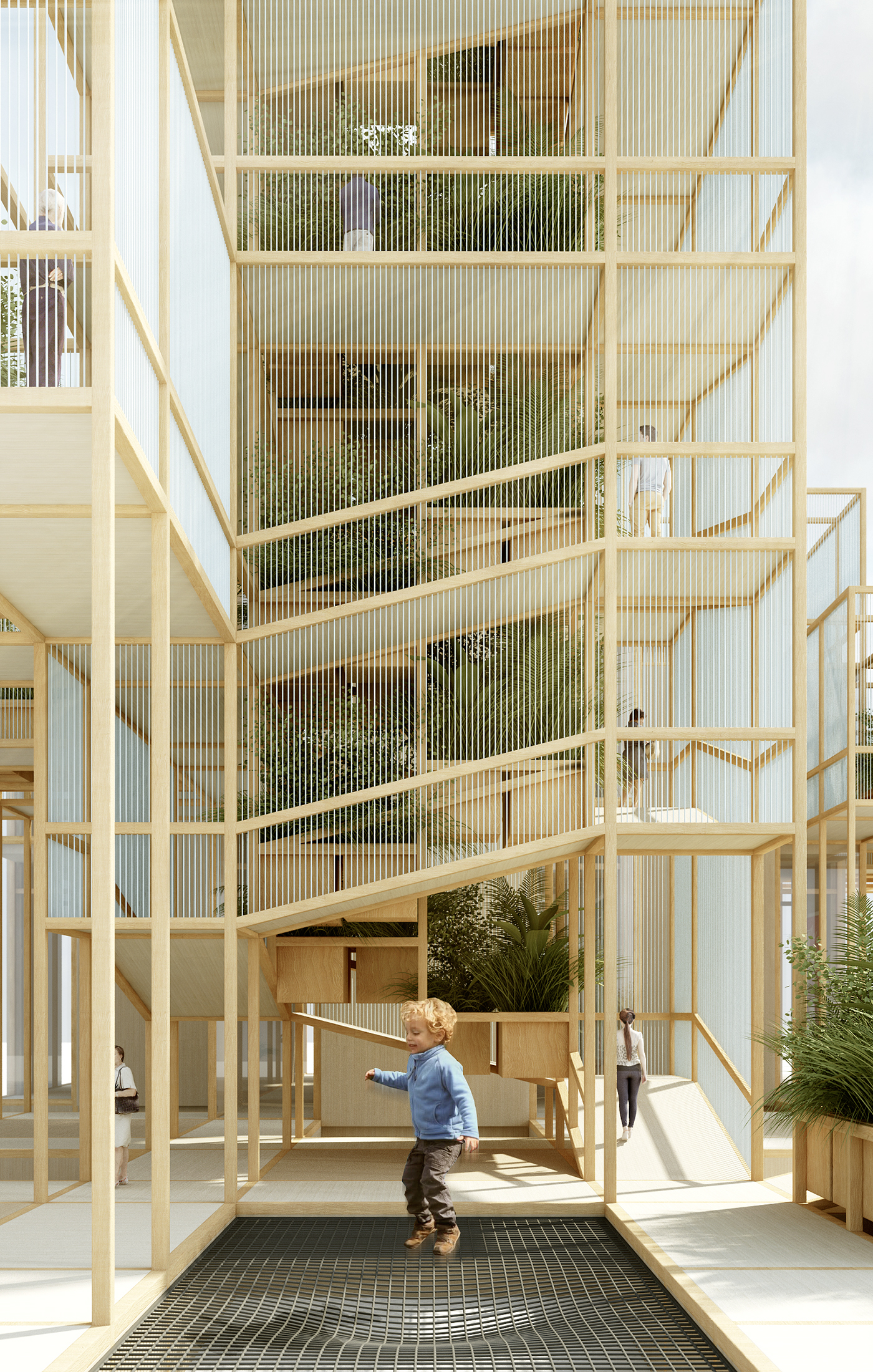

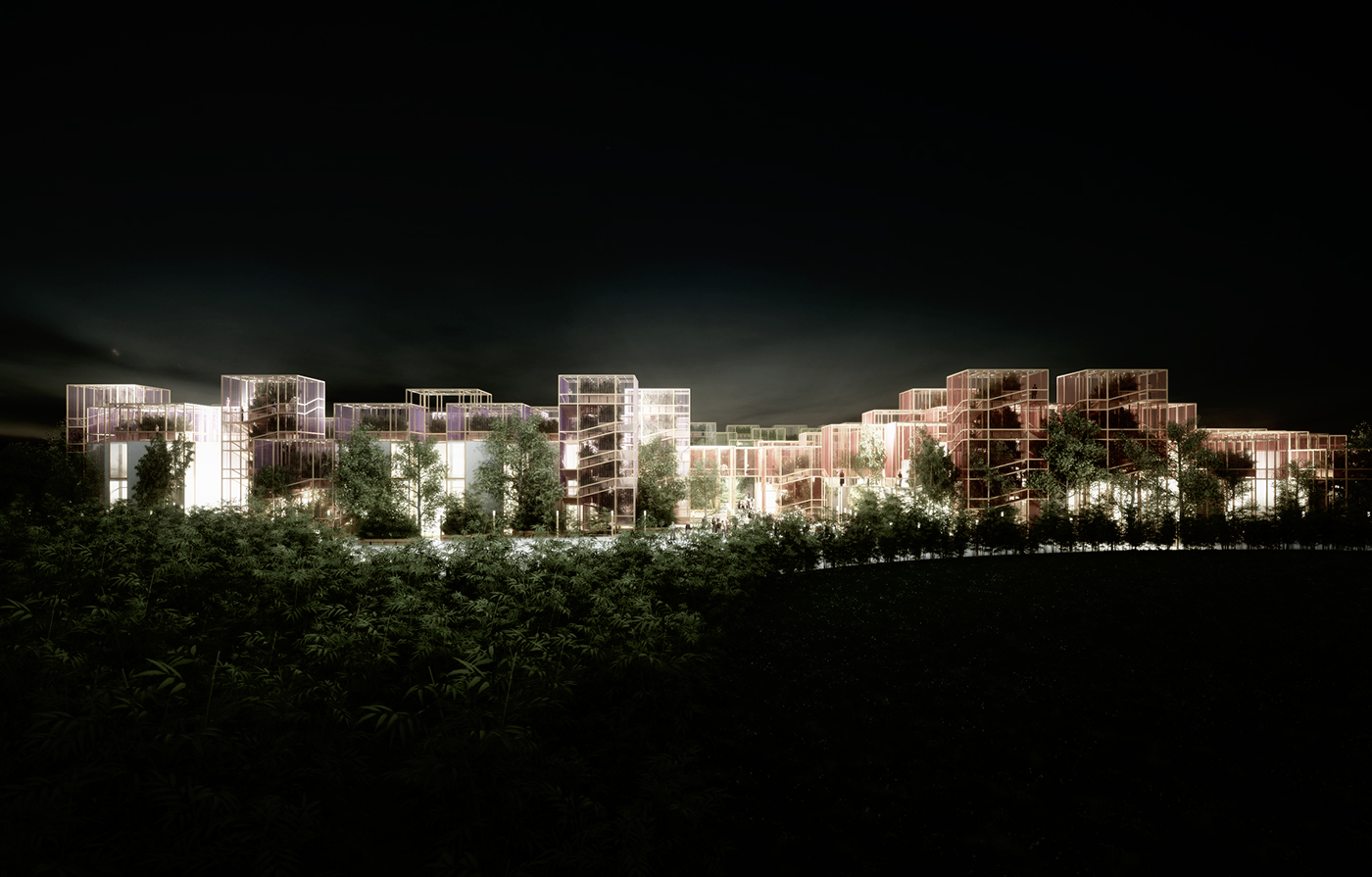

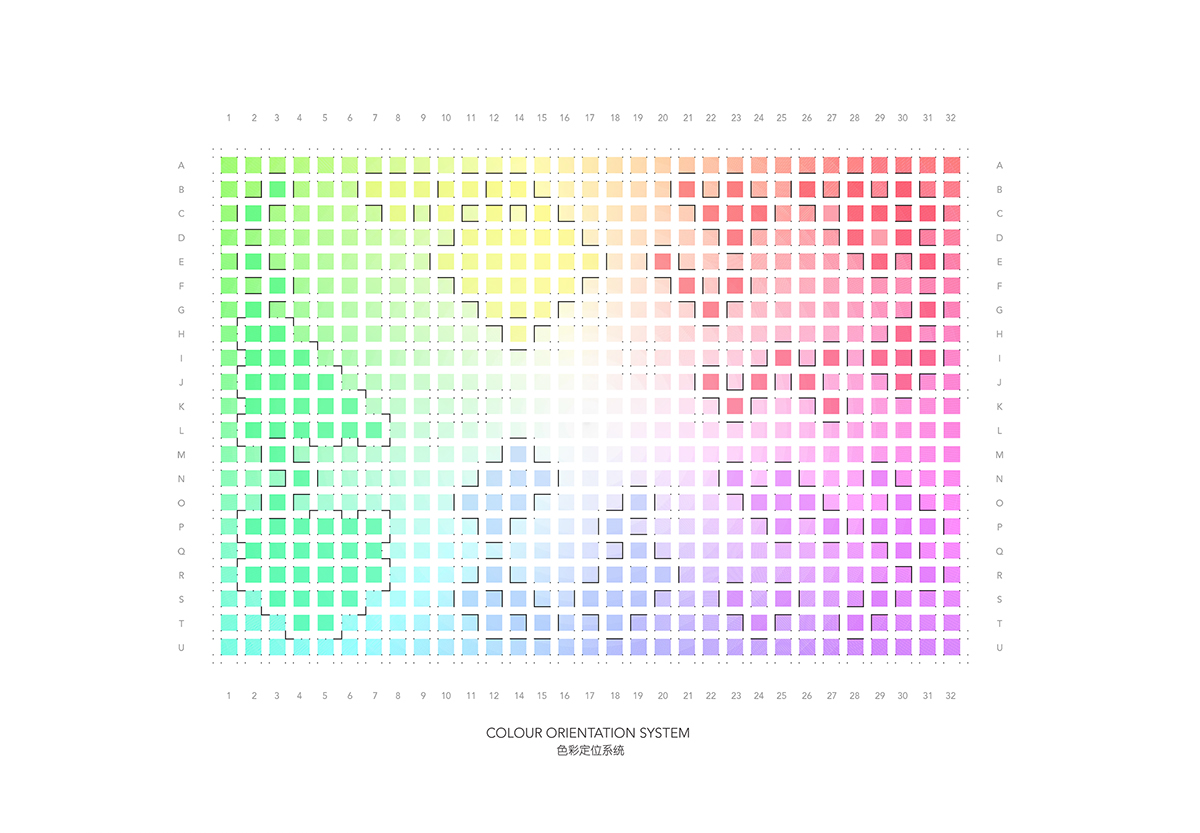
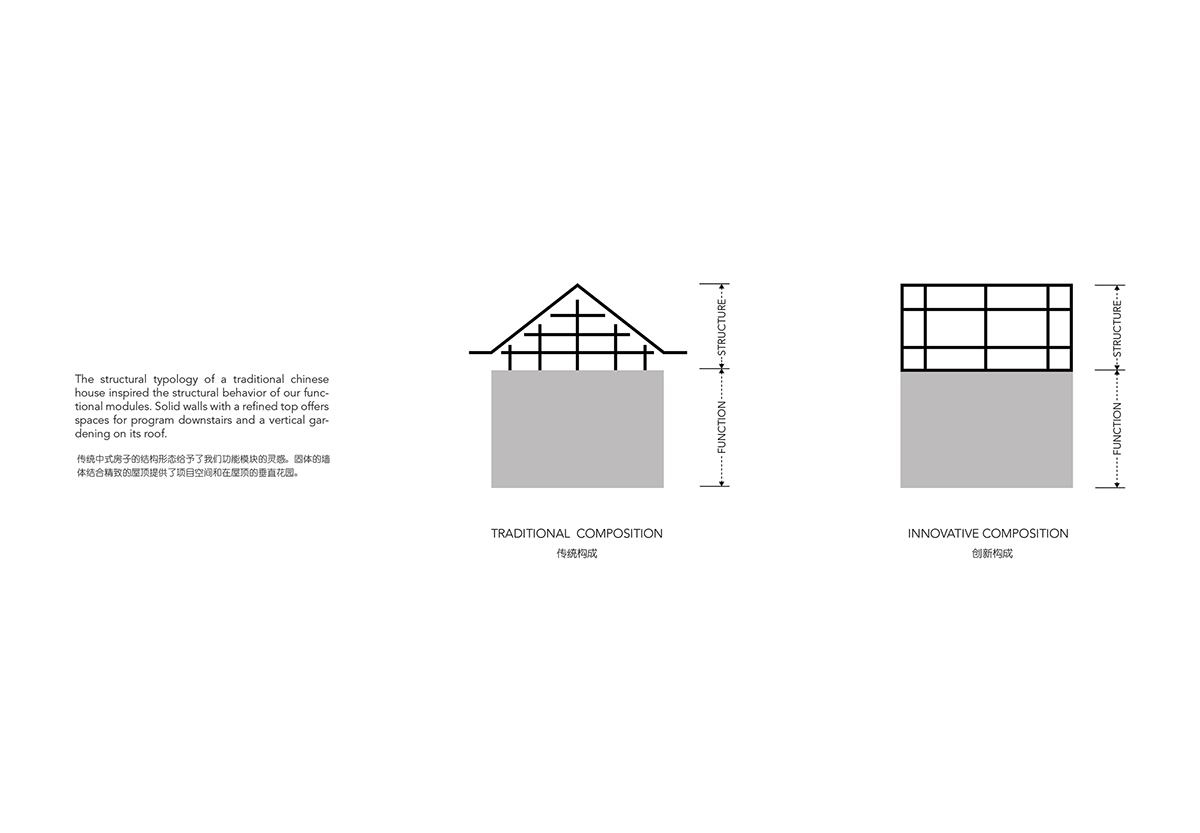
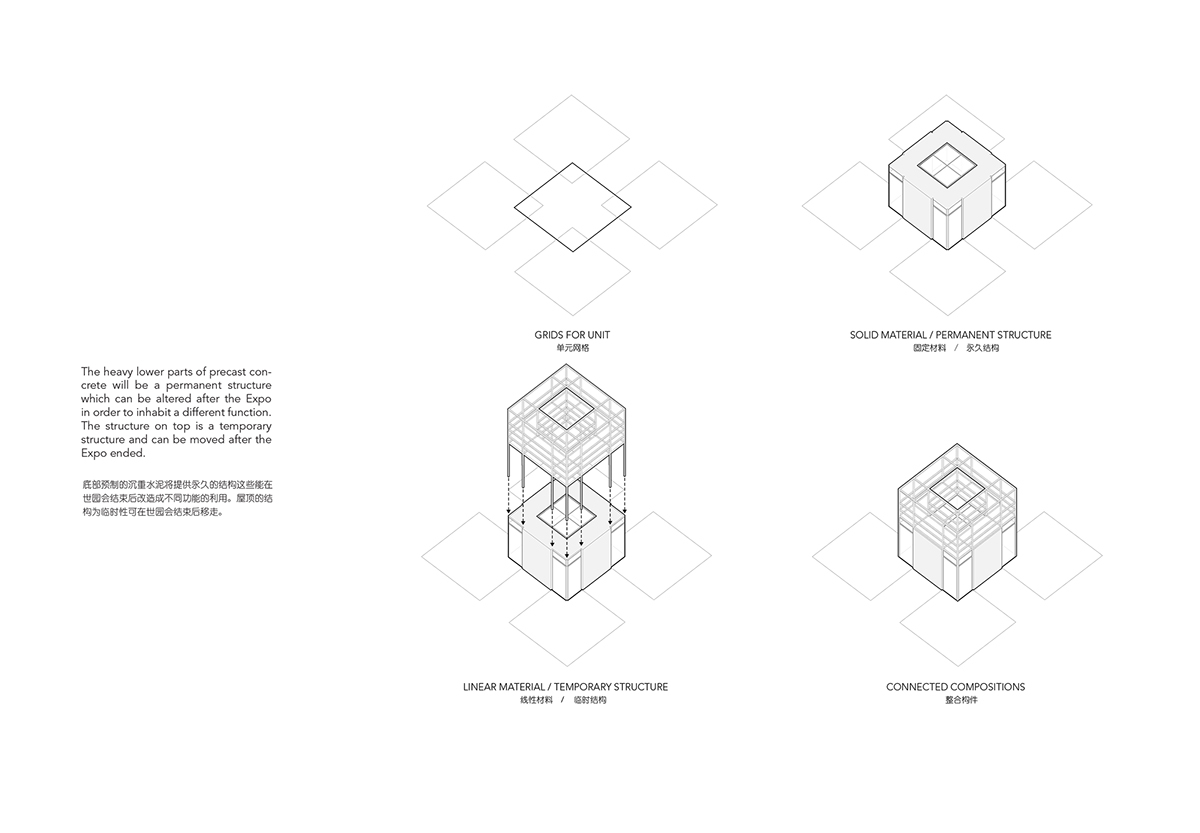
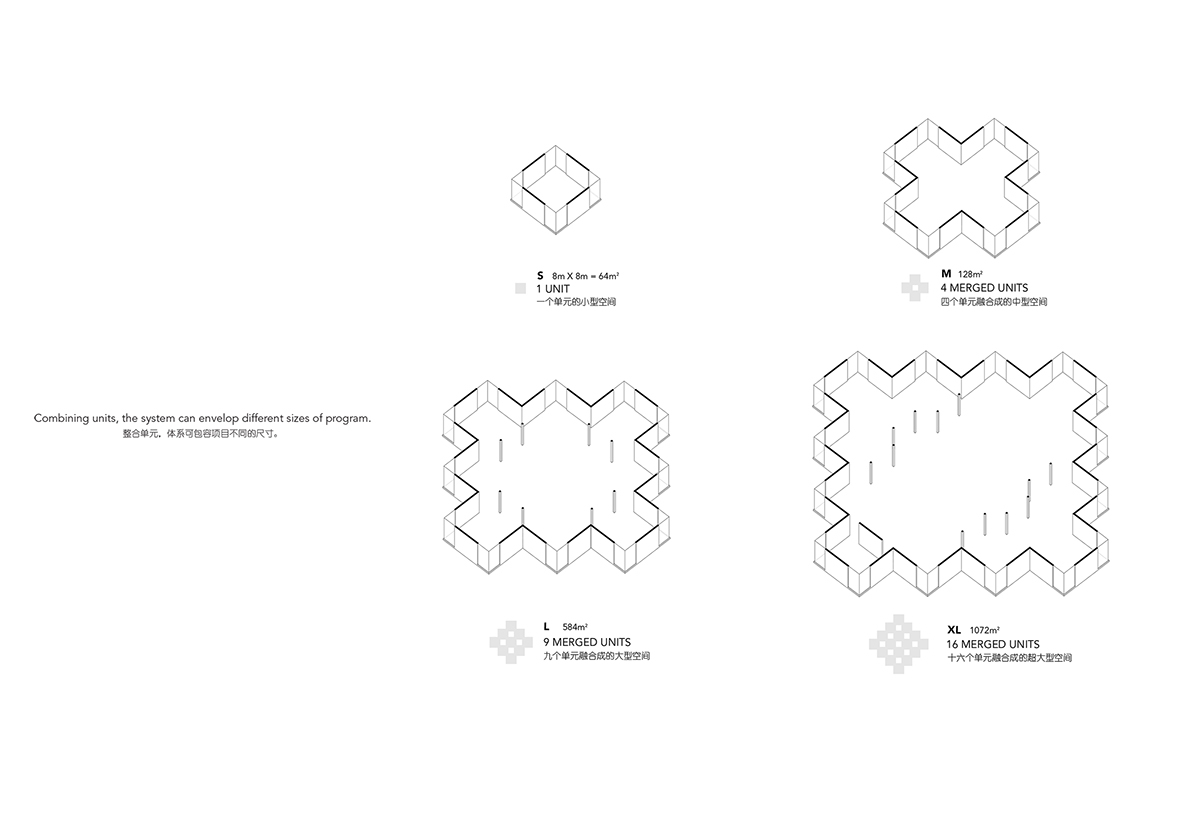
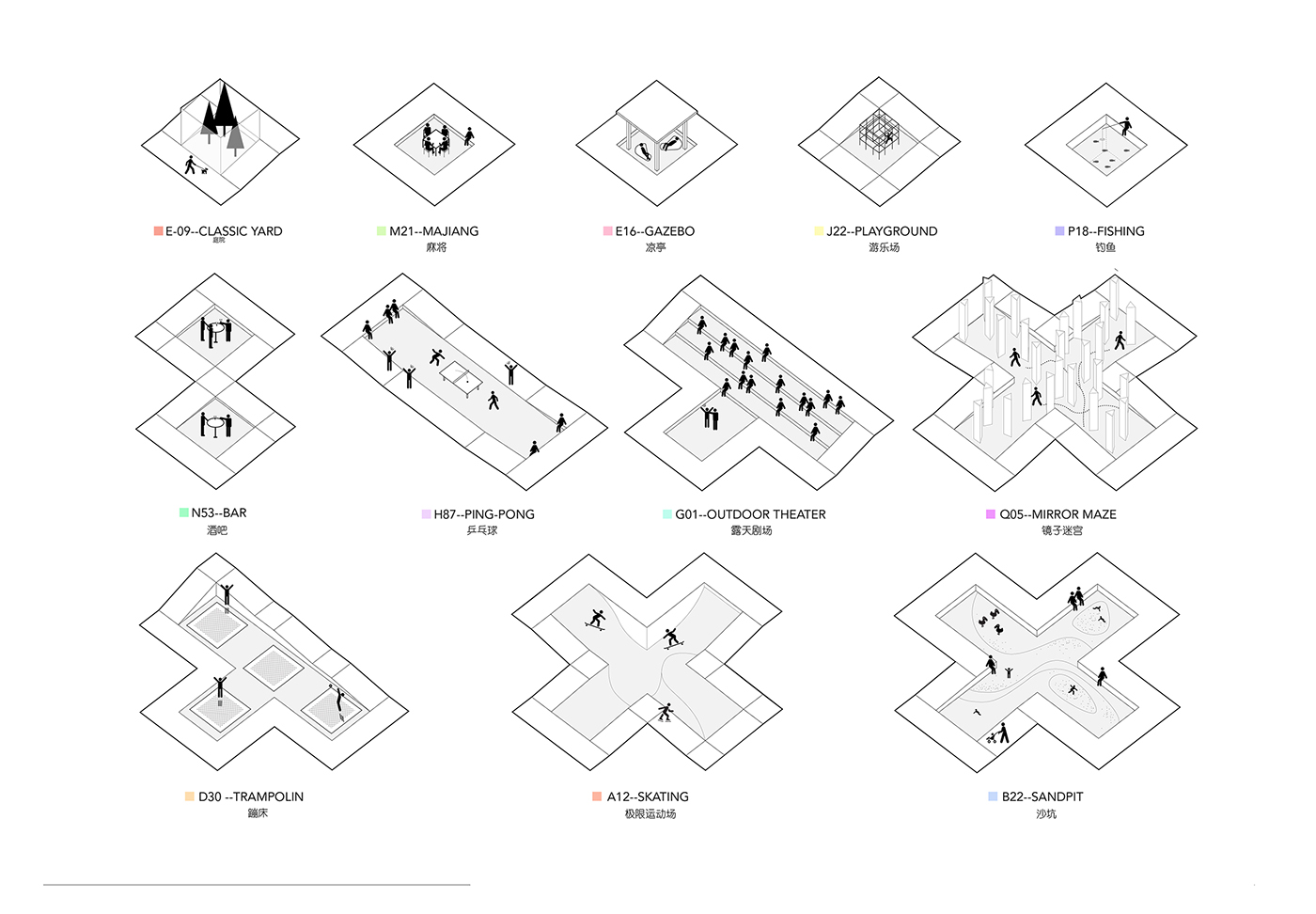
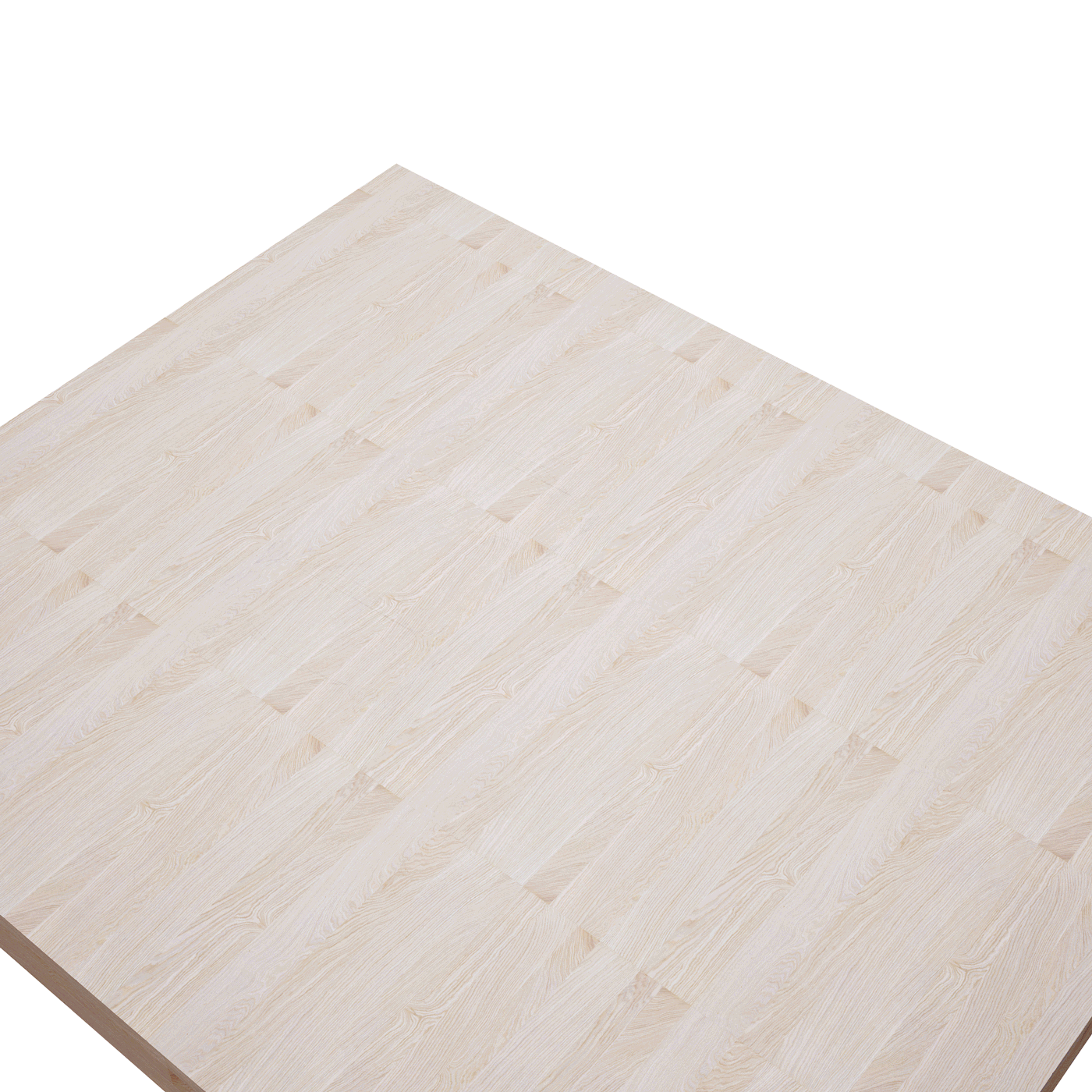
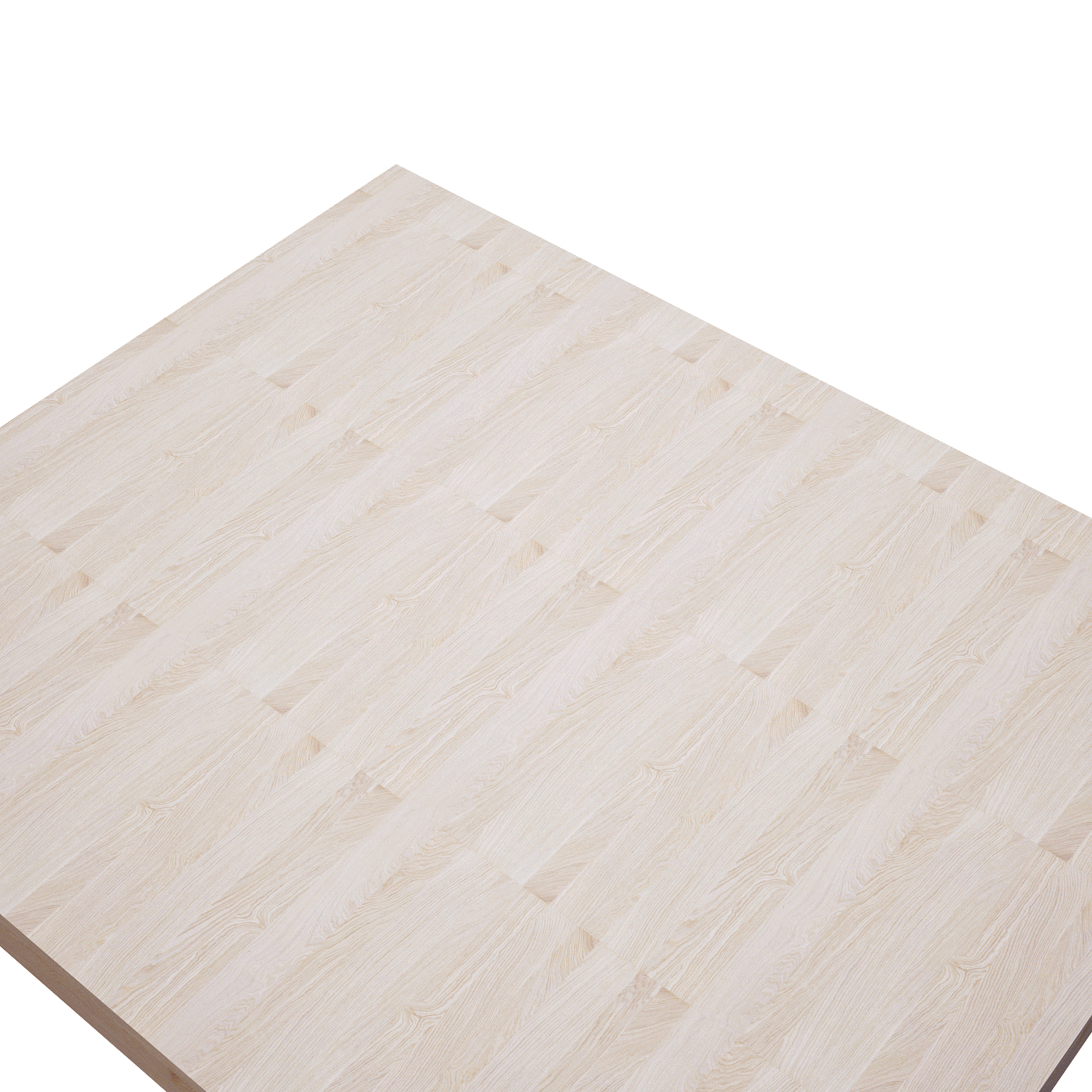
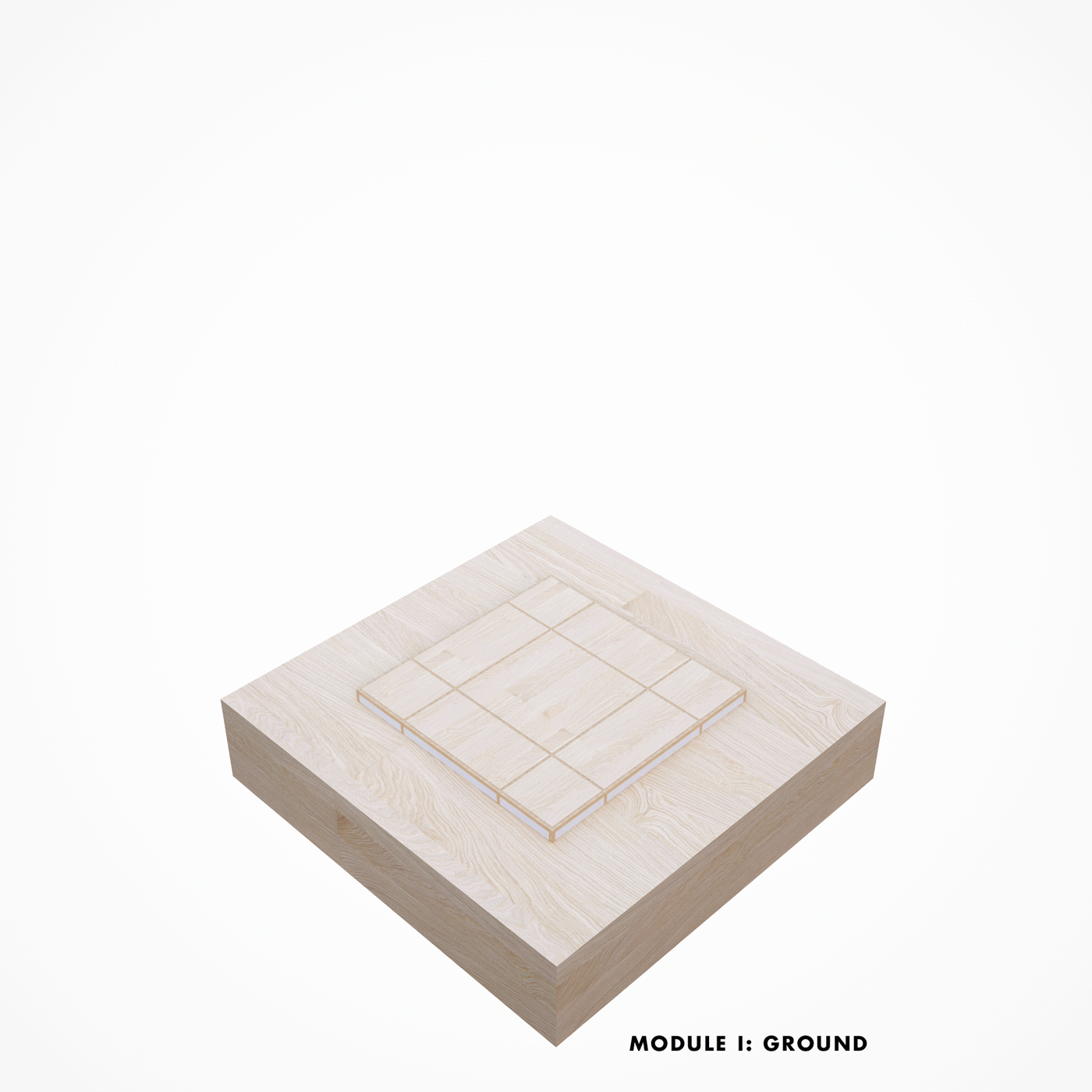
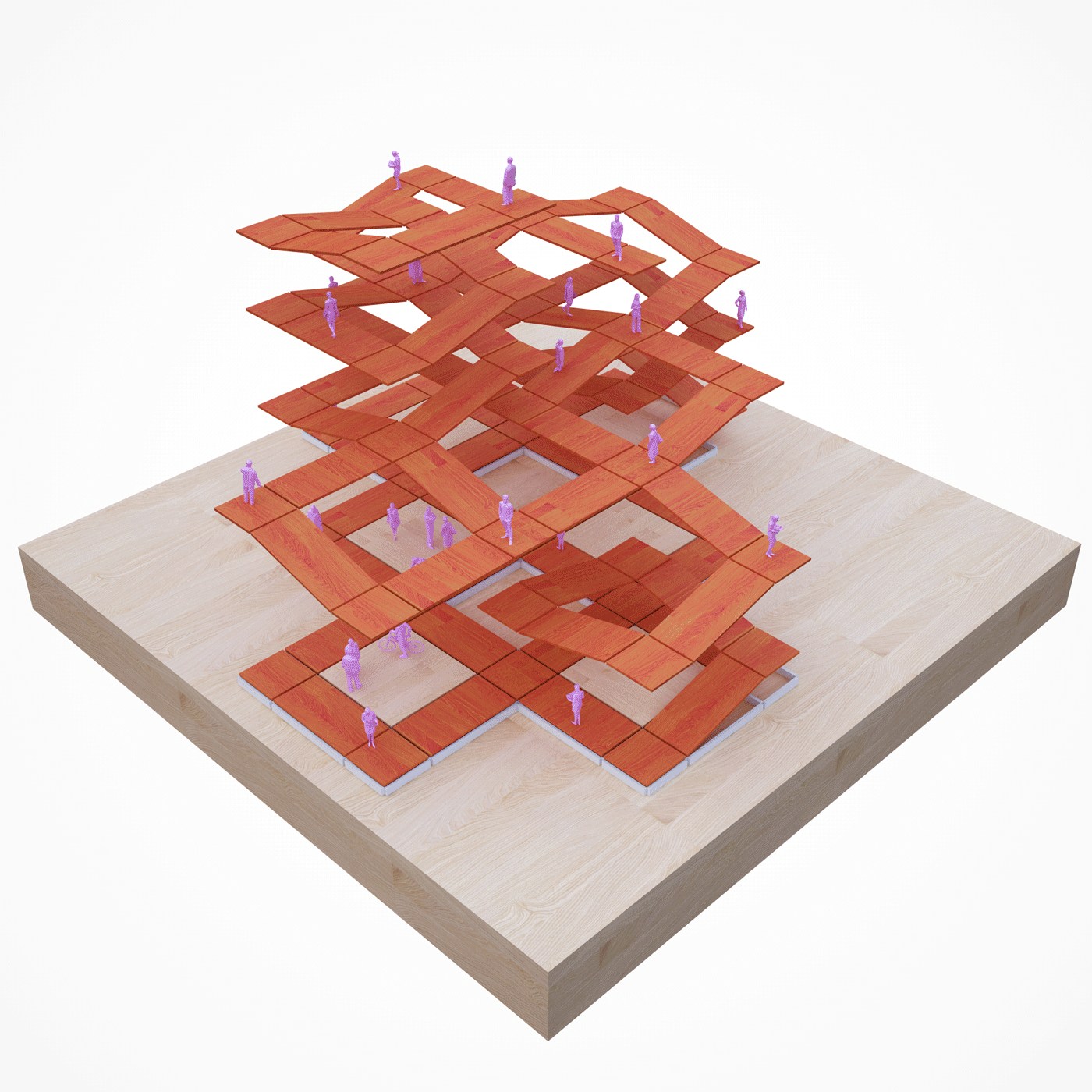
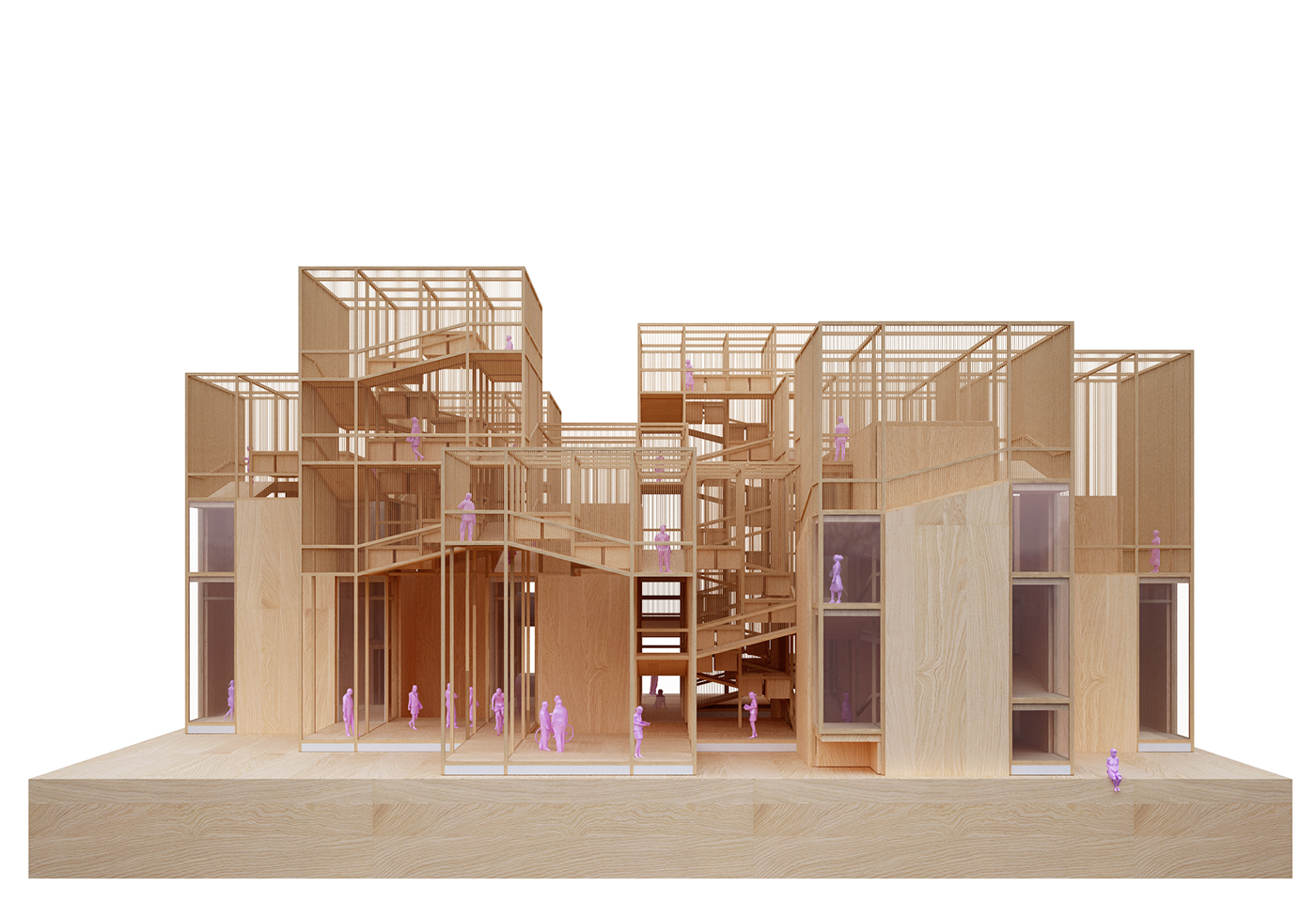
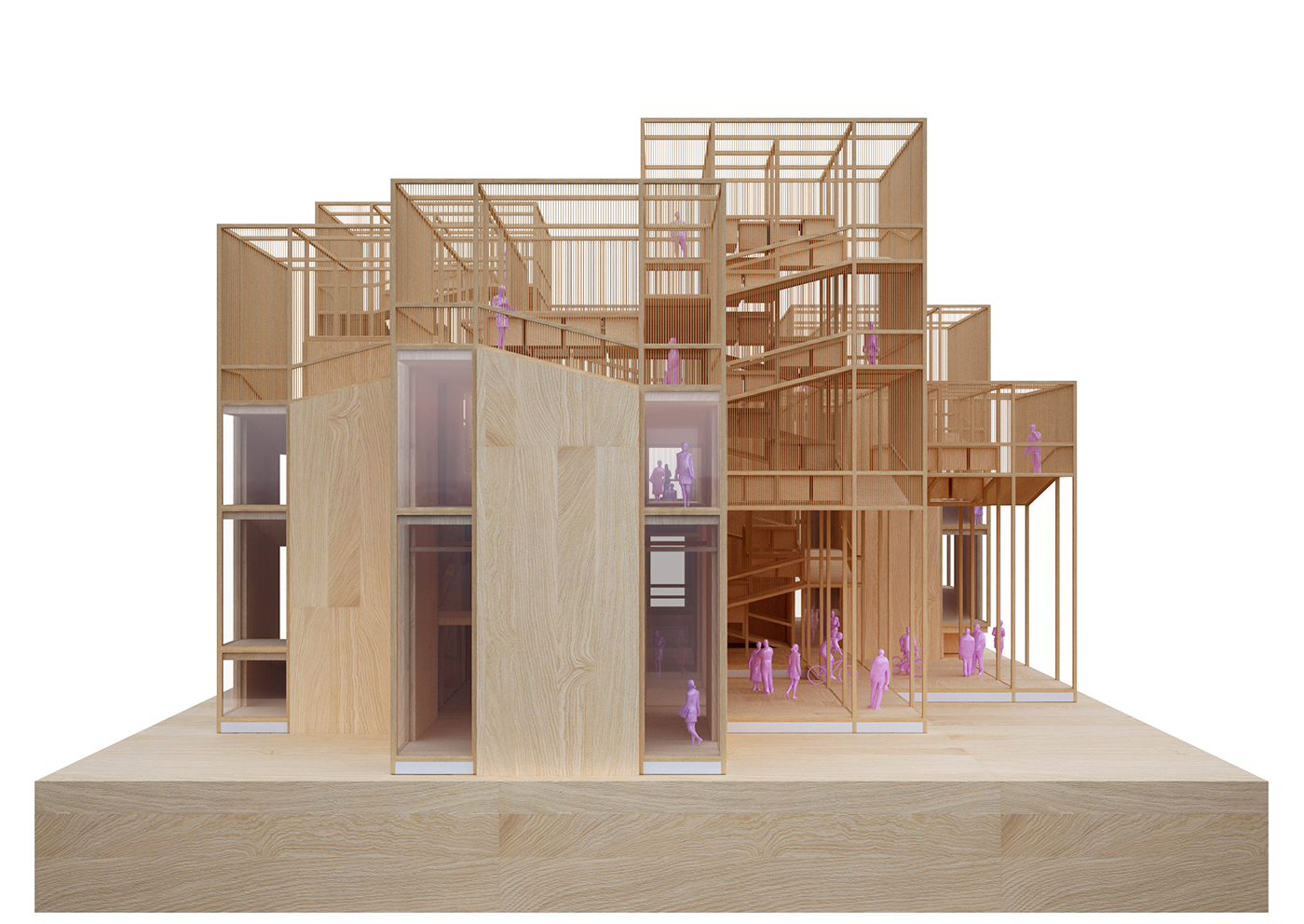
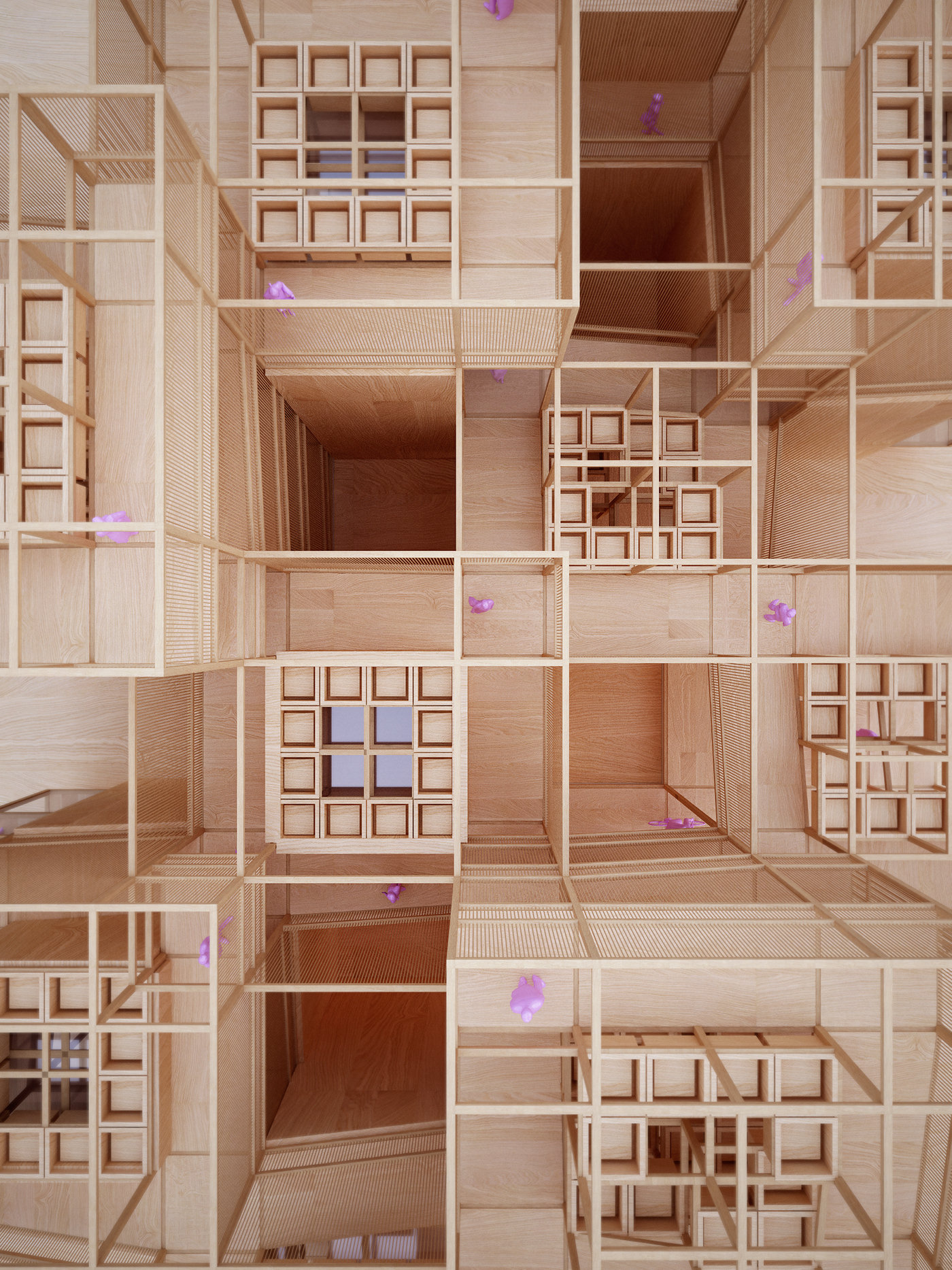
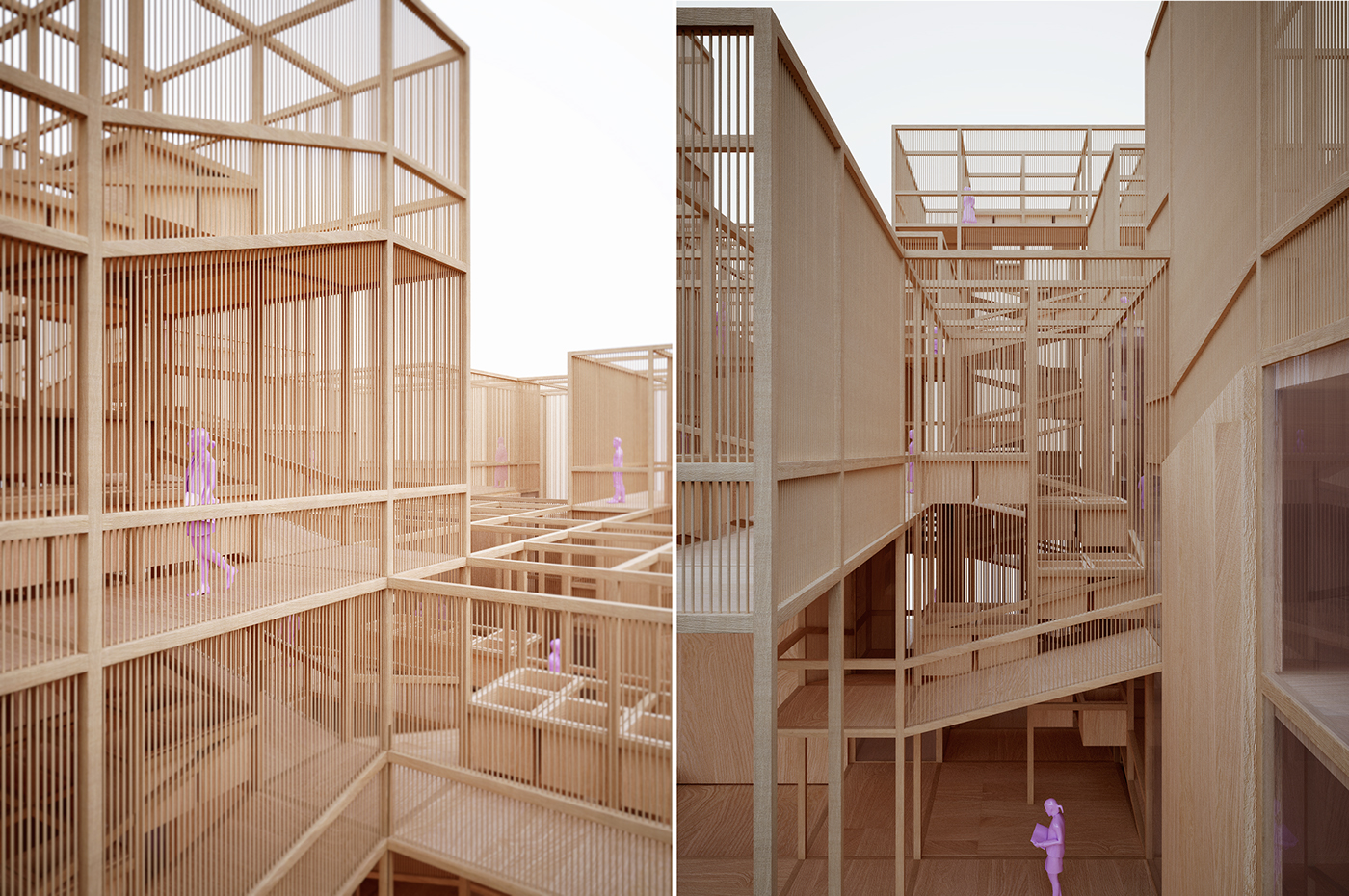

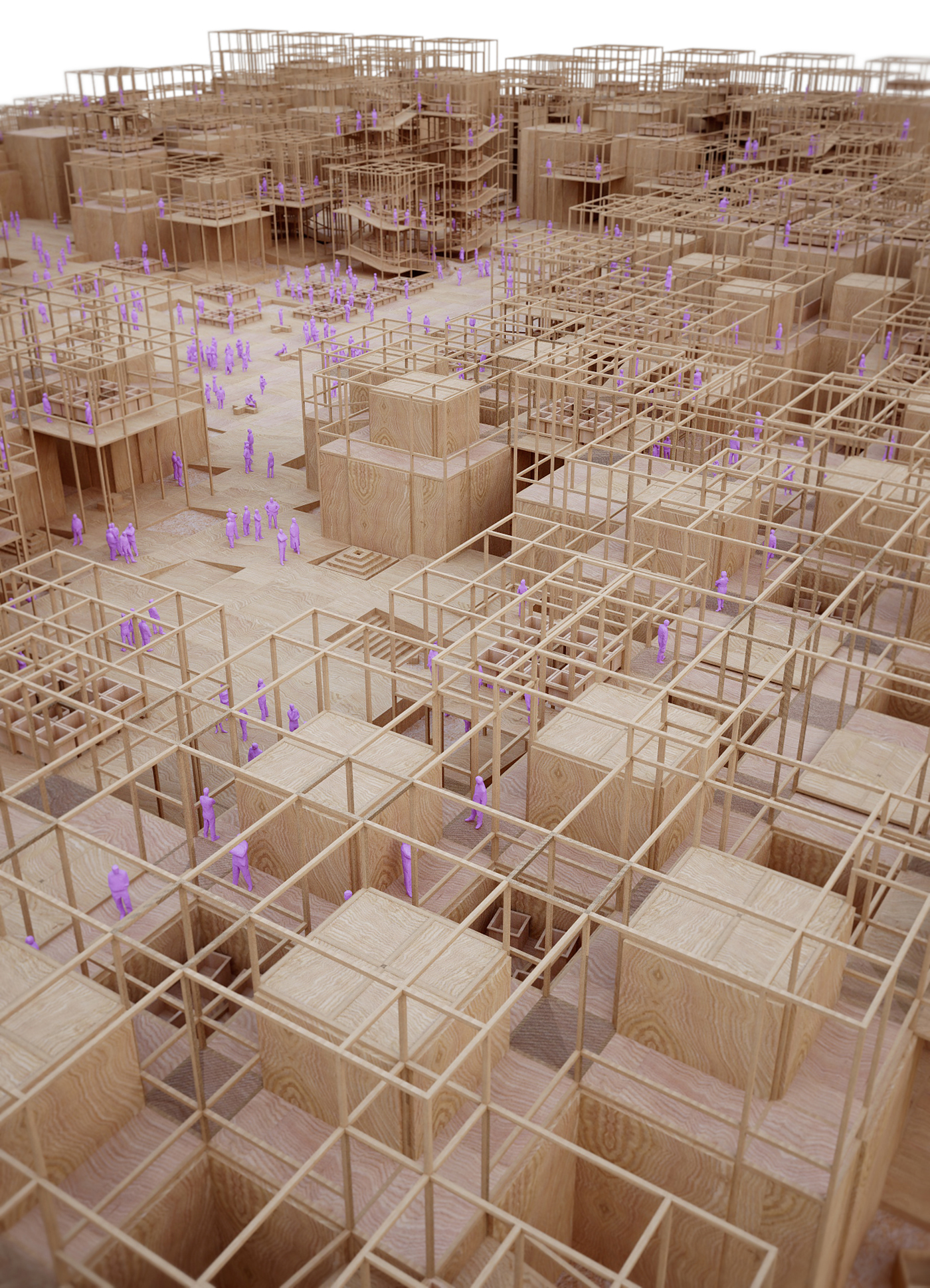
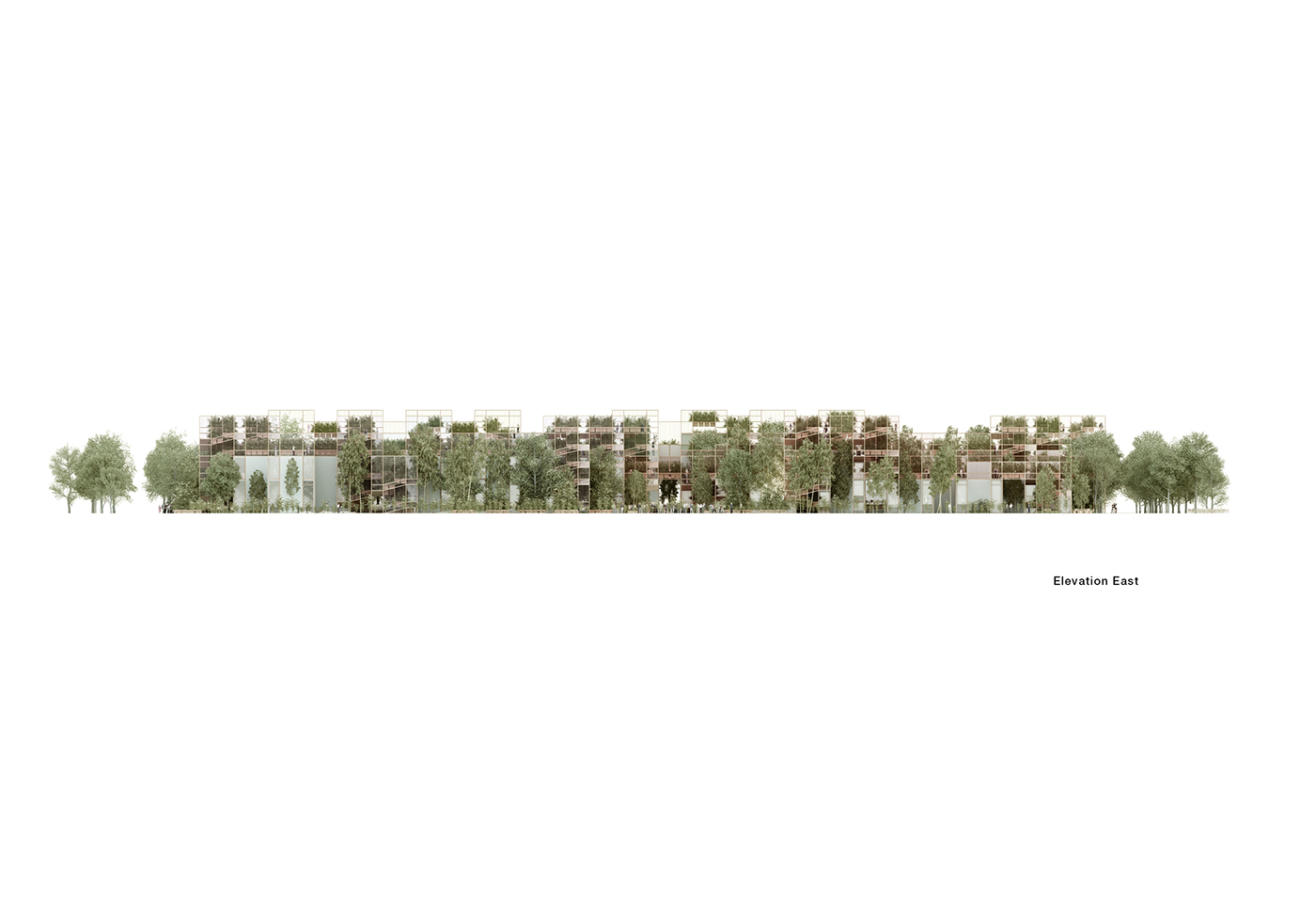
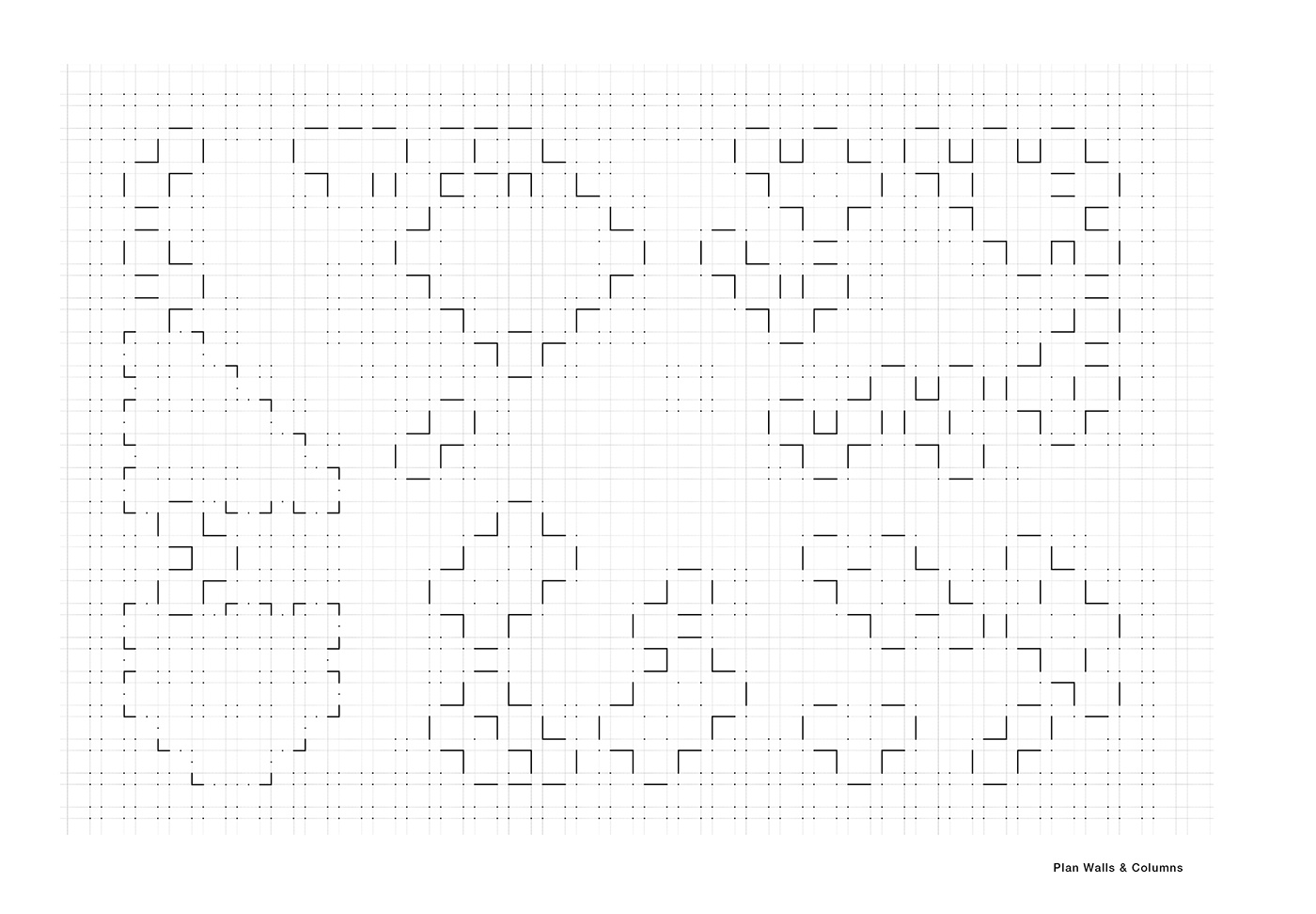

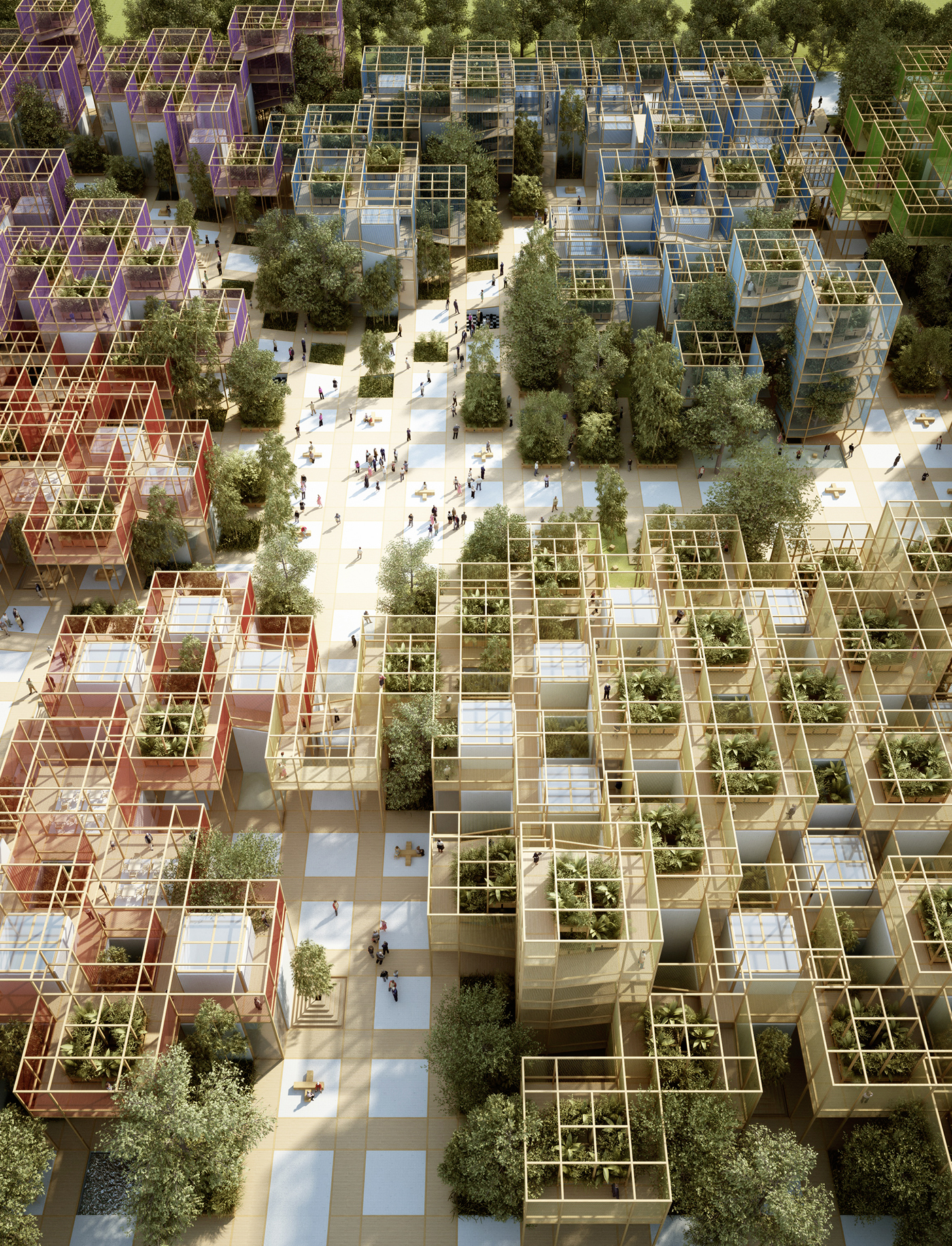
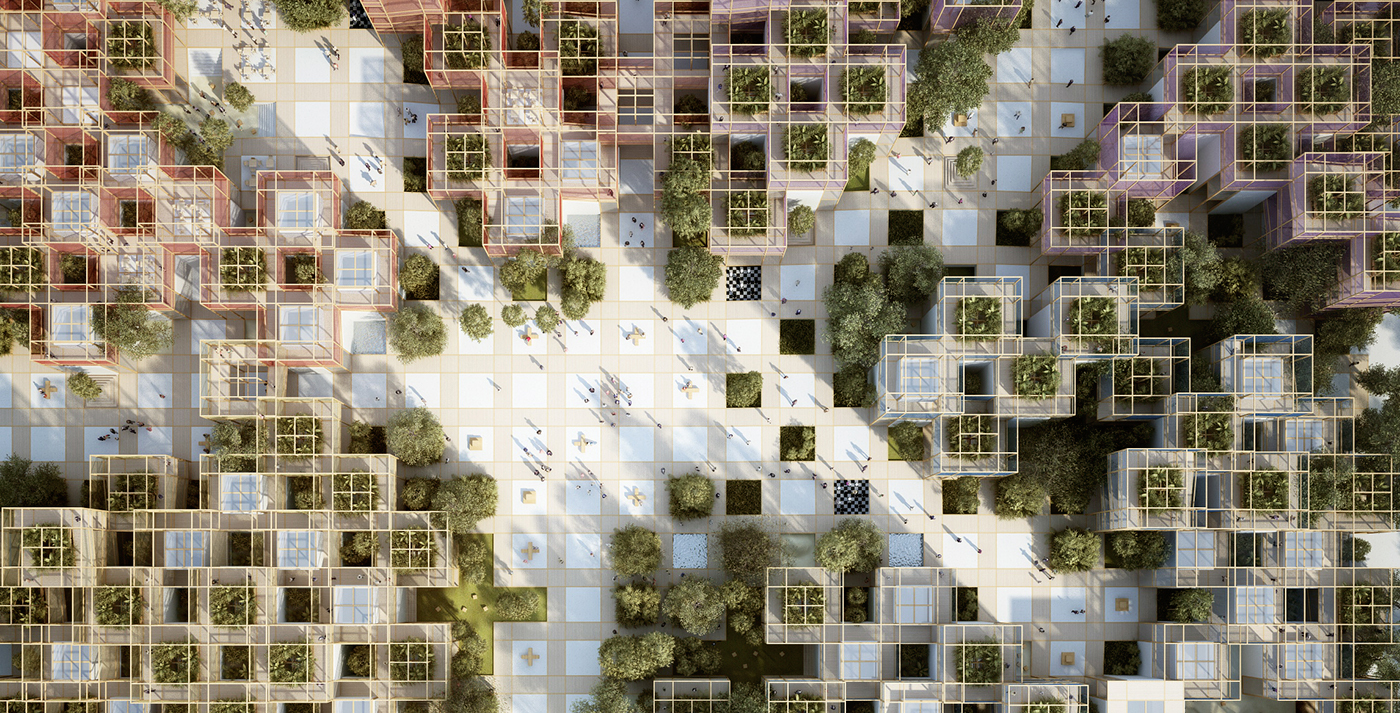
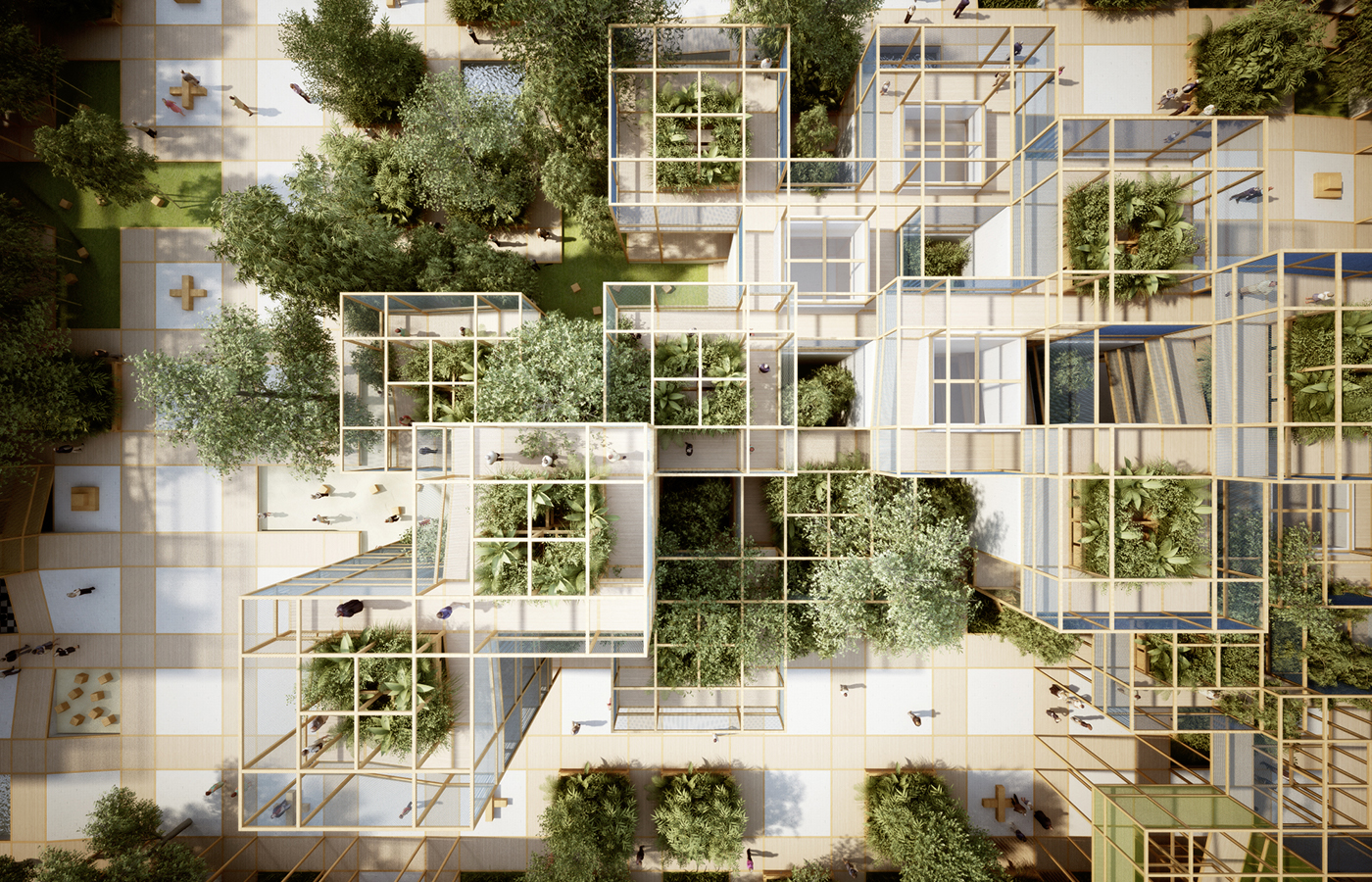
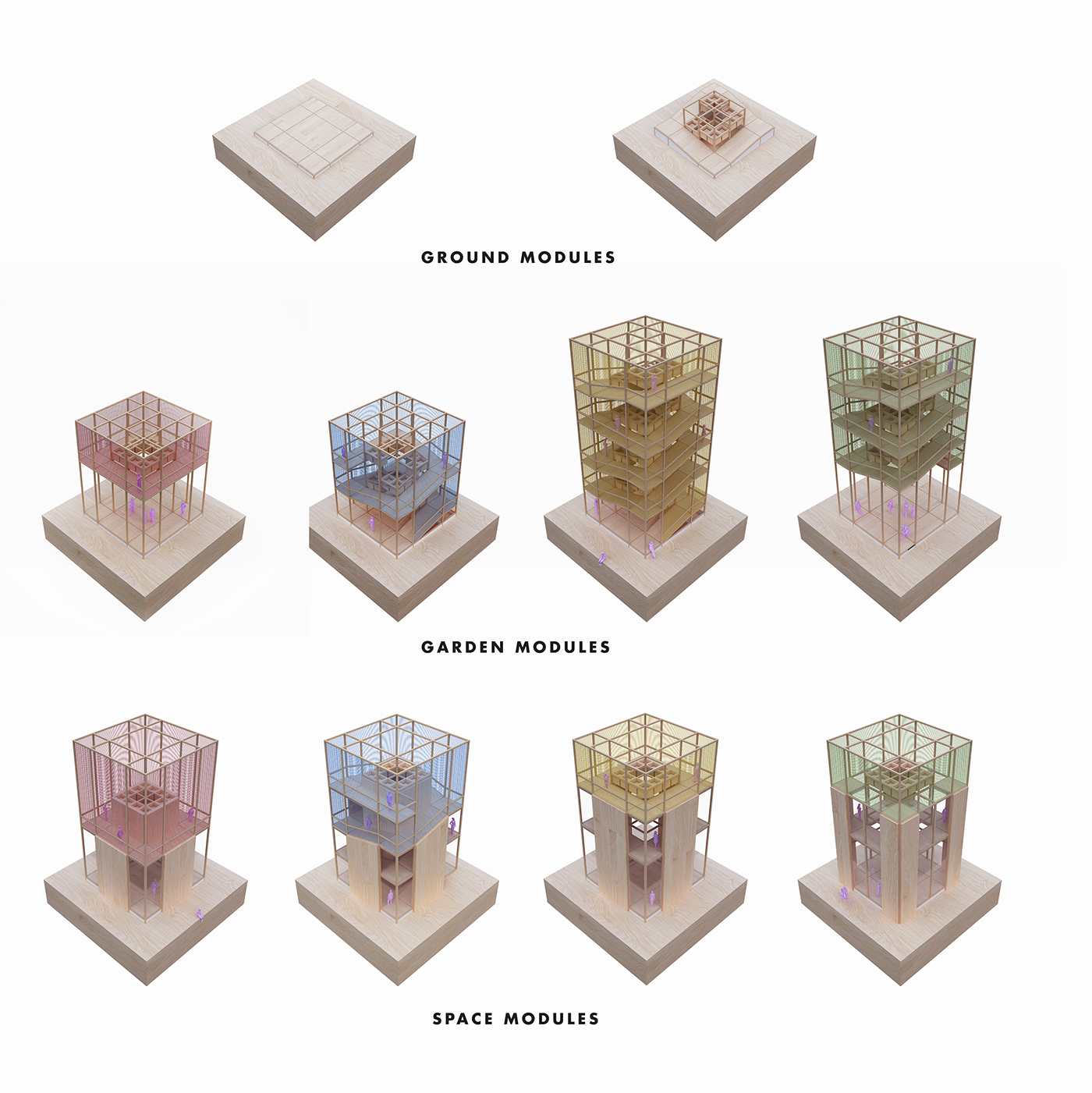
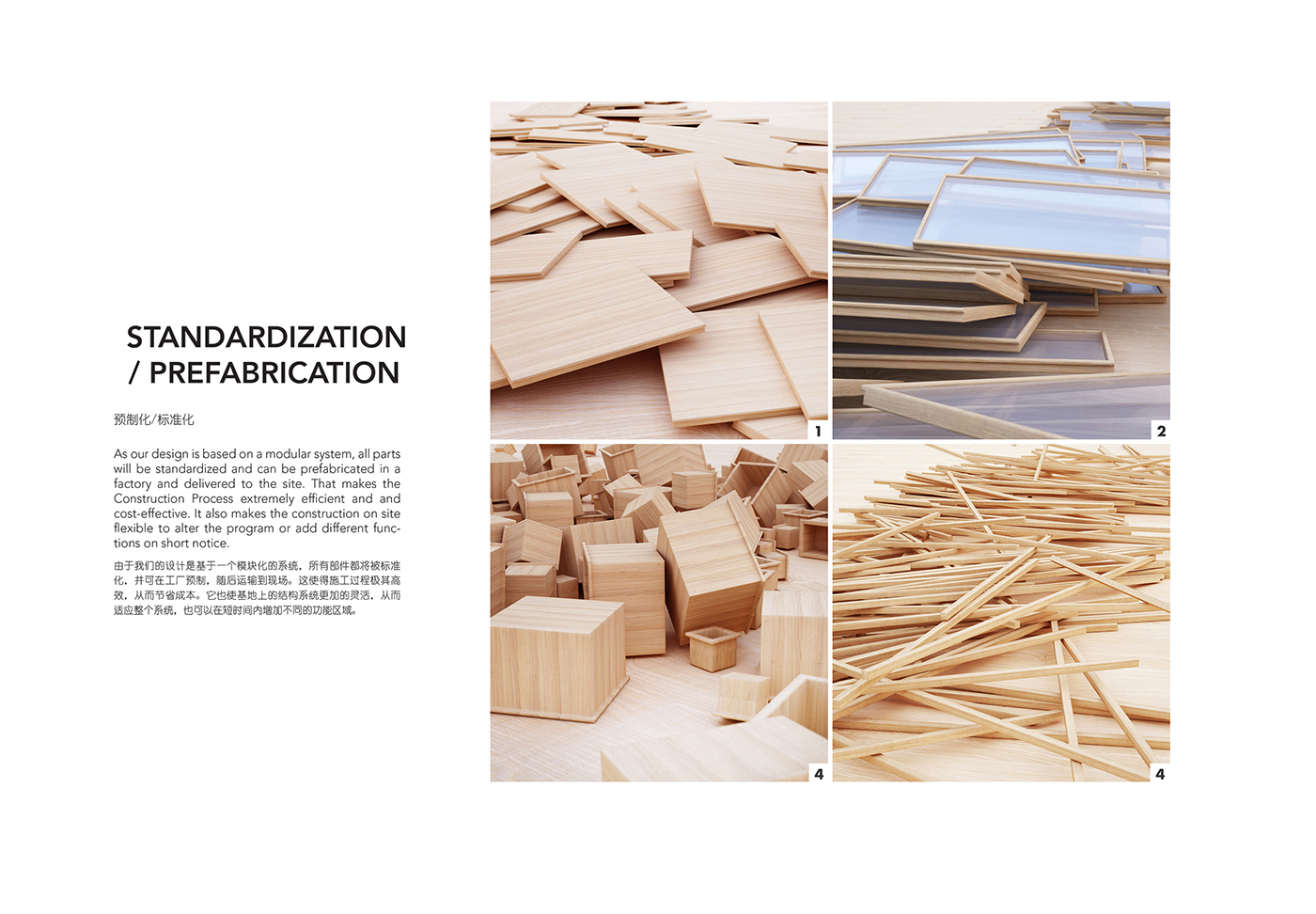

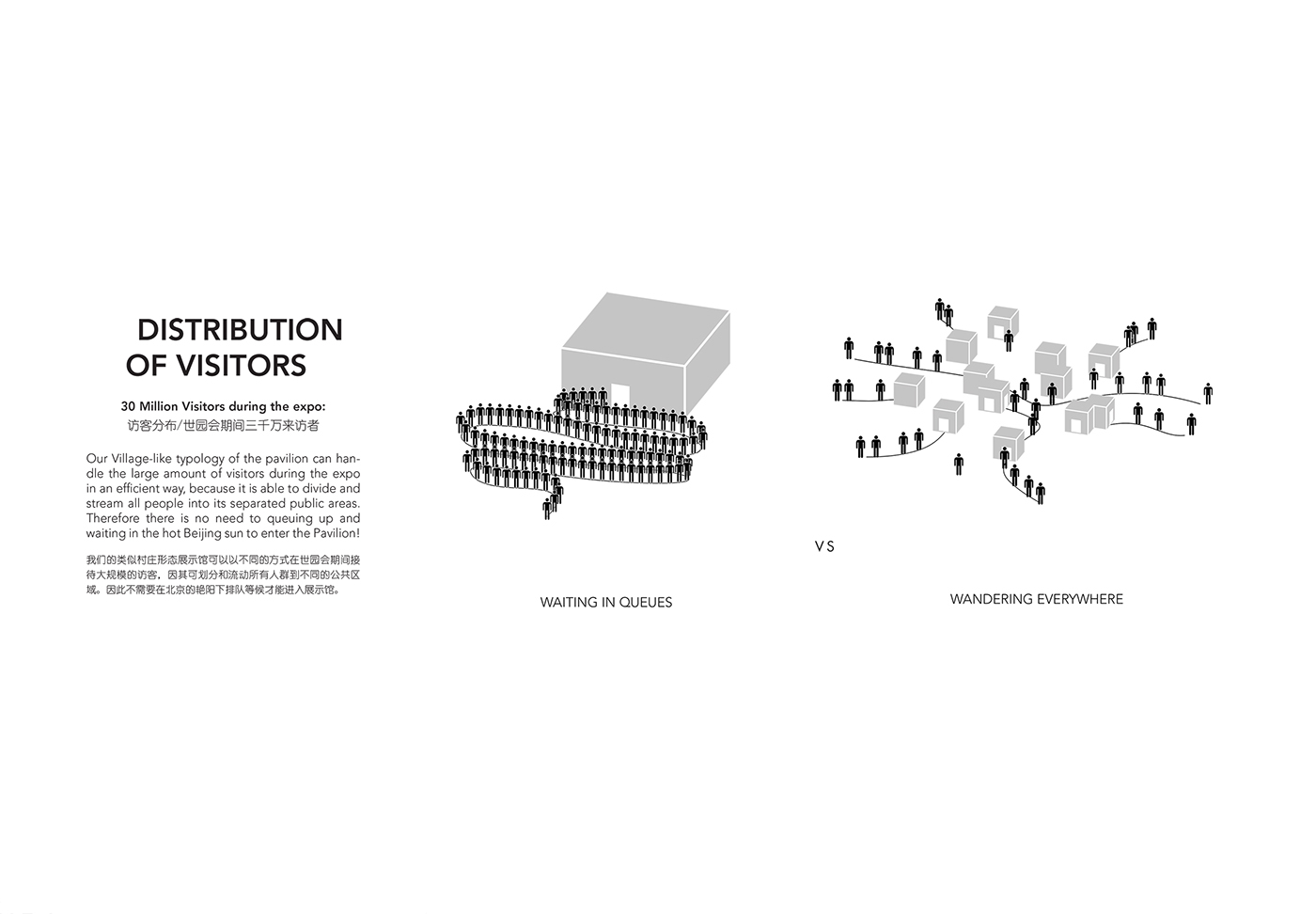
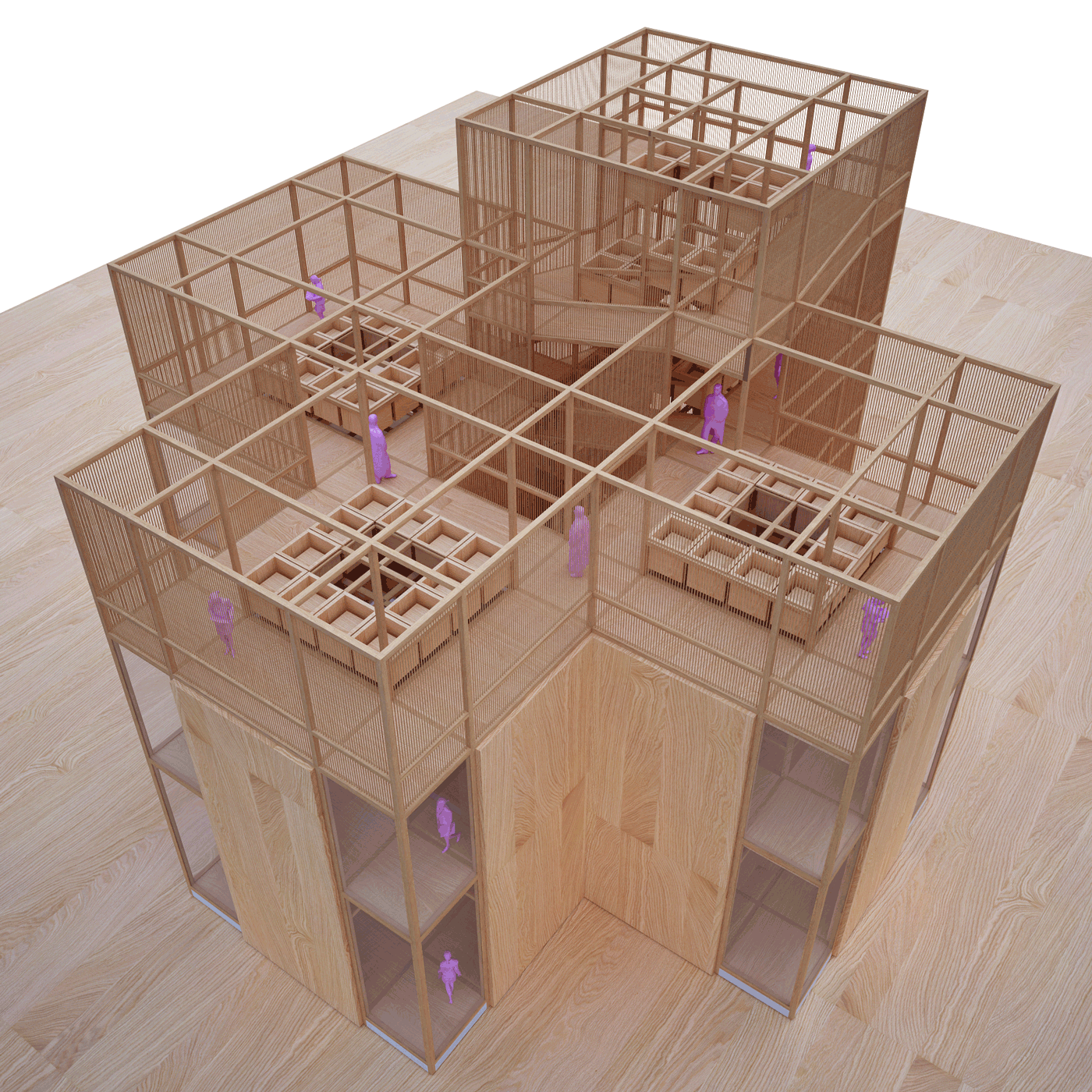
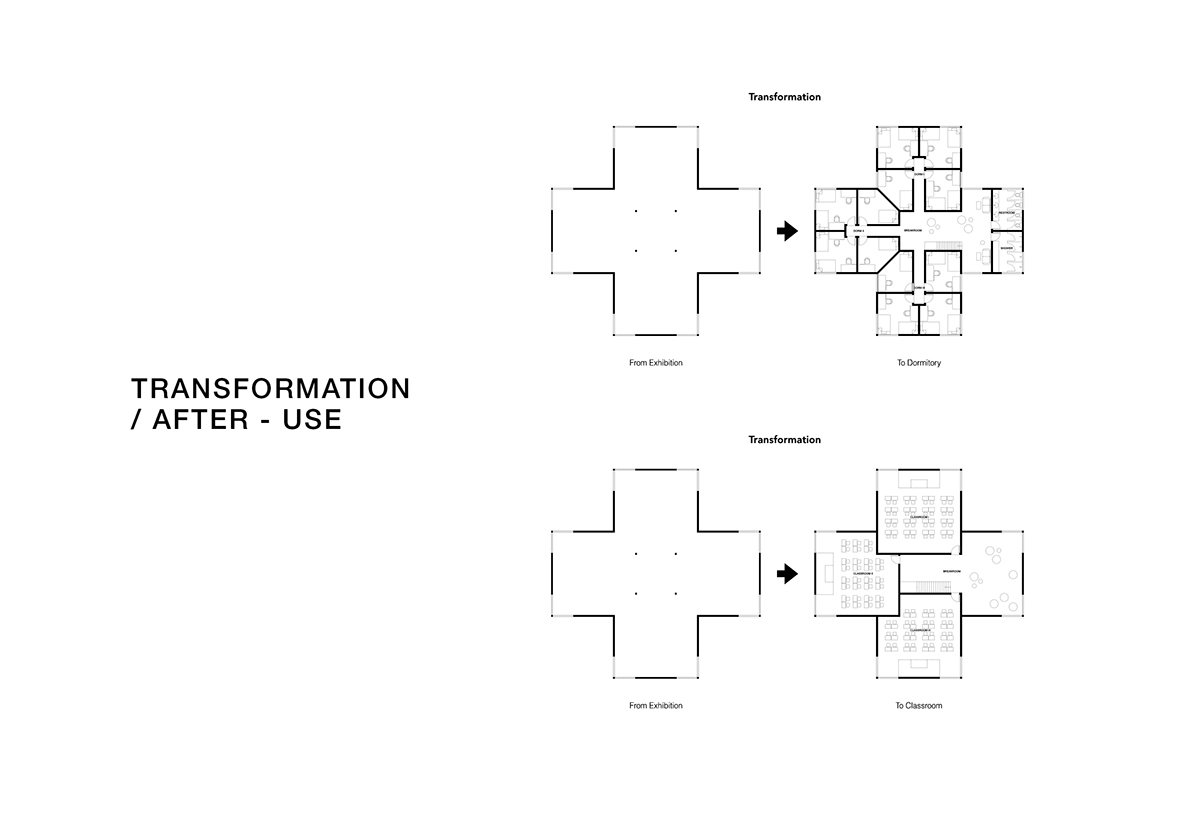
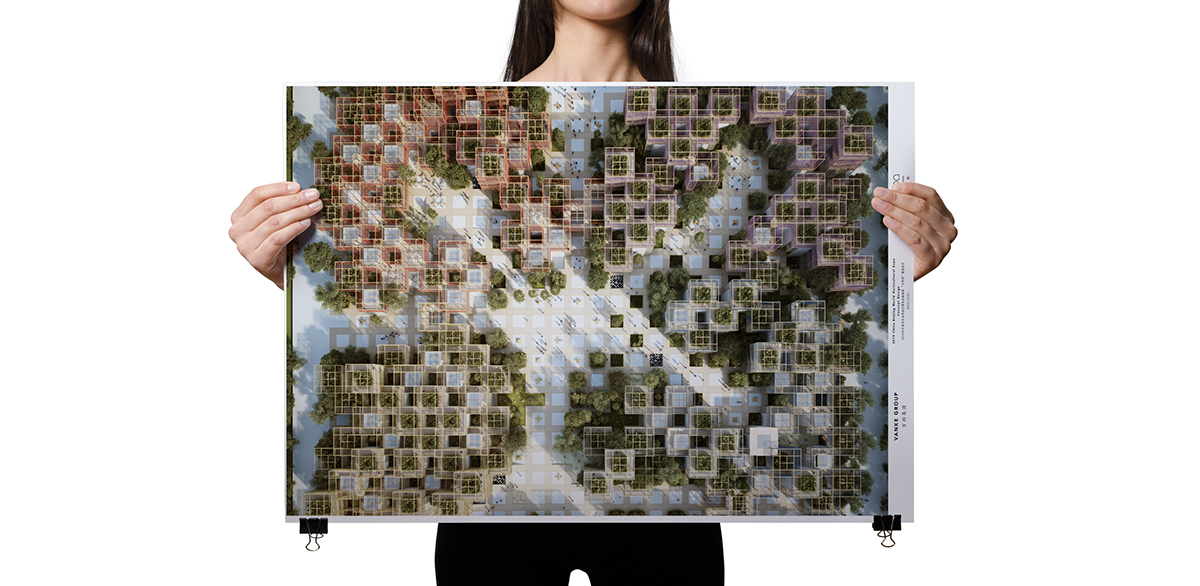
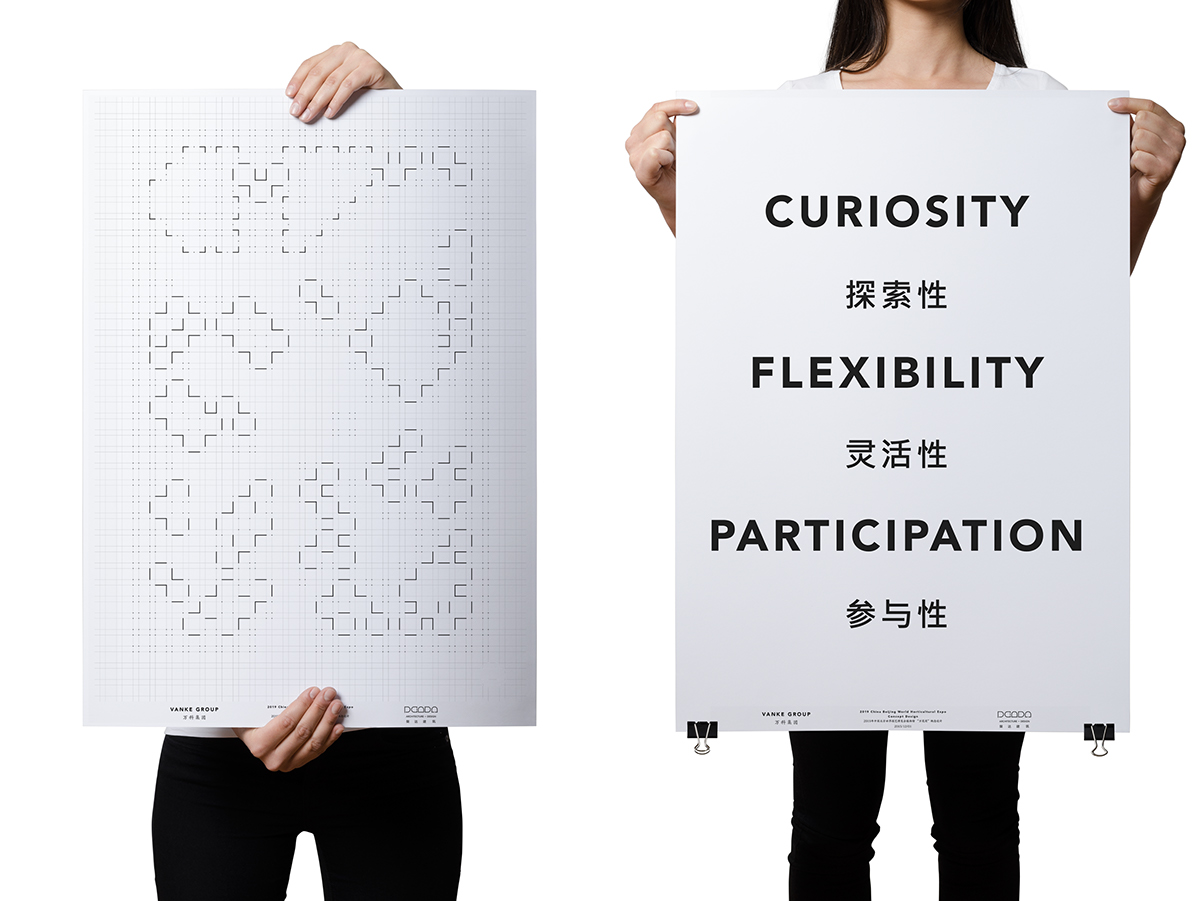
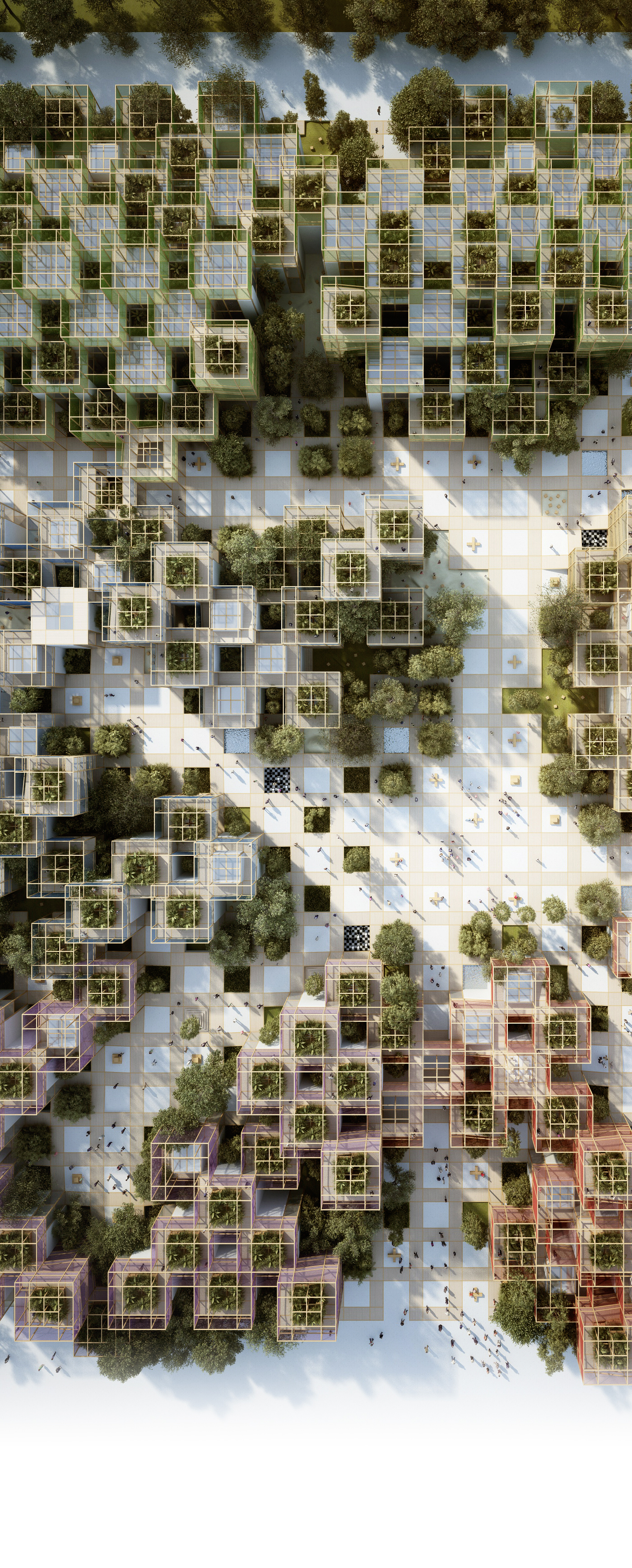
For more information on the Project, general updates or a more detailed view on our work, please visit our
website
or our
facebookpage
and follow us on instagram
@chrisprecht_penda
website
or our
facebookpage
and follow us on instagram
@chrisprecht_penda
